Motorhome day thirty-nine: Wellington to Motutere Bay
We awoke to leaden skies, after a night of rain. That was a shame, as today was the day we’d earmarked to spend at the New Zealand Bangladesh Test Match. It was supposed to have started yesterday, but was rained off completely, and today didn’t look any better.
So we packed up and struck off north, after a short video-conference with our Brazil ‘fixer’ (!) about some exciting plans for that leg of the trip. No spoilers, though… ????
We sailed through Wellington’s usually clogged approach road traffic, it being Saturday, and settled into a long but rapid transit of State Highway 1. The North Island vegetation was pleasantly familiar from the first part of the trip, but so different from the South Island. It was a little like coming home to the Dales after spending time in the Lake District. The Lakes are craggy, all sharp points and tall, dark hillsides. The Dales are softer, more rounded. And of course, home…
It was difficult to find somewhere to stop for lunch, but eventually a picnic site hove into view, and we had a quick lunch of toast and pâté.
Almost as soon as we set off again, we spotted Mount Ruapehu. It’s a huge volcano, 2700m at the crater ridge, with snow on the inner flanks of its ruined peak. Hiding in its skirts (or so it appeared from this angle) there was another classic volcanic cone, Mount Ngauruhoe. It’s nearly as high at 2200m, but still very conical.
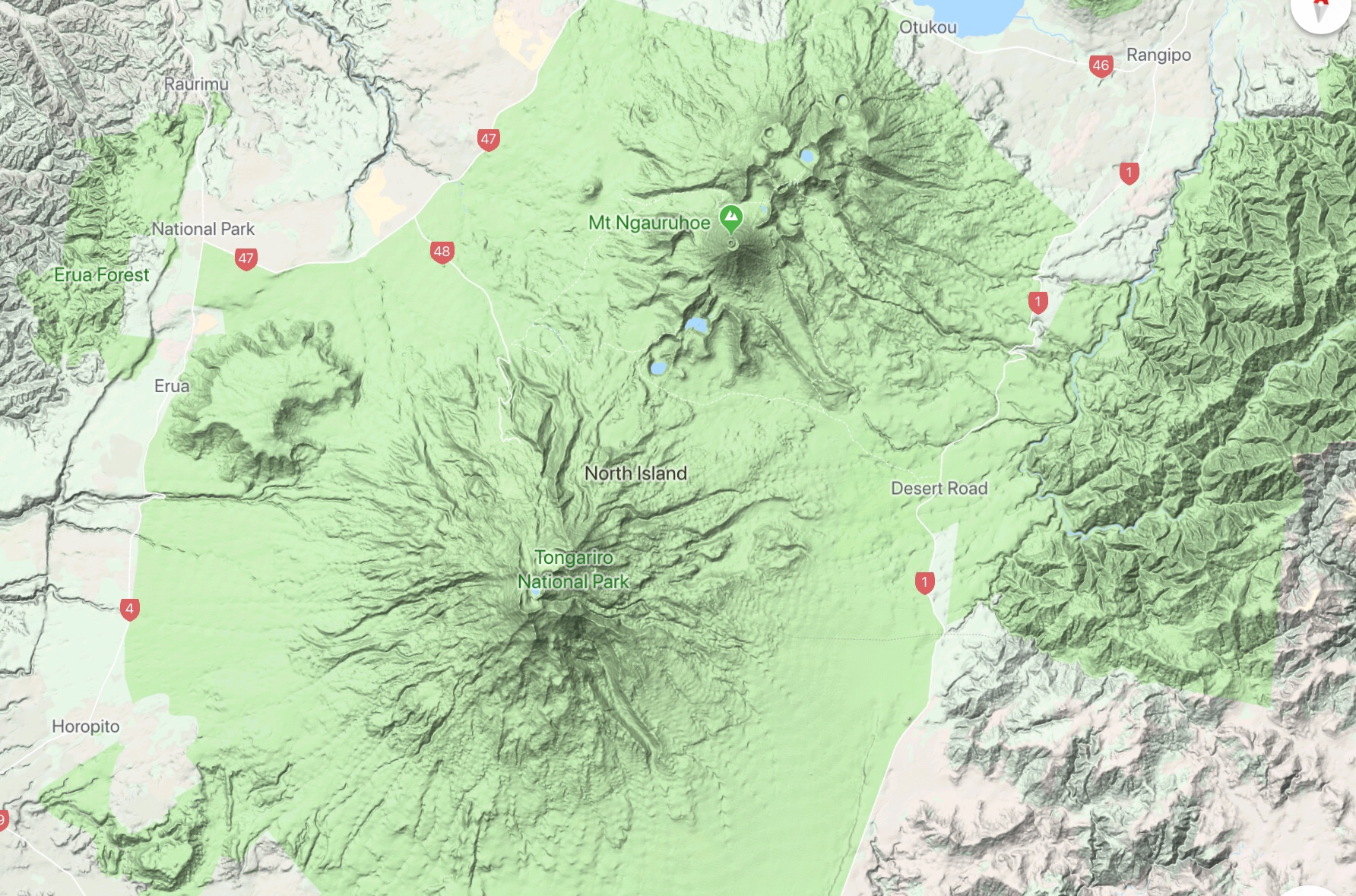
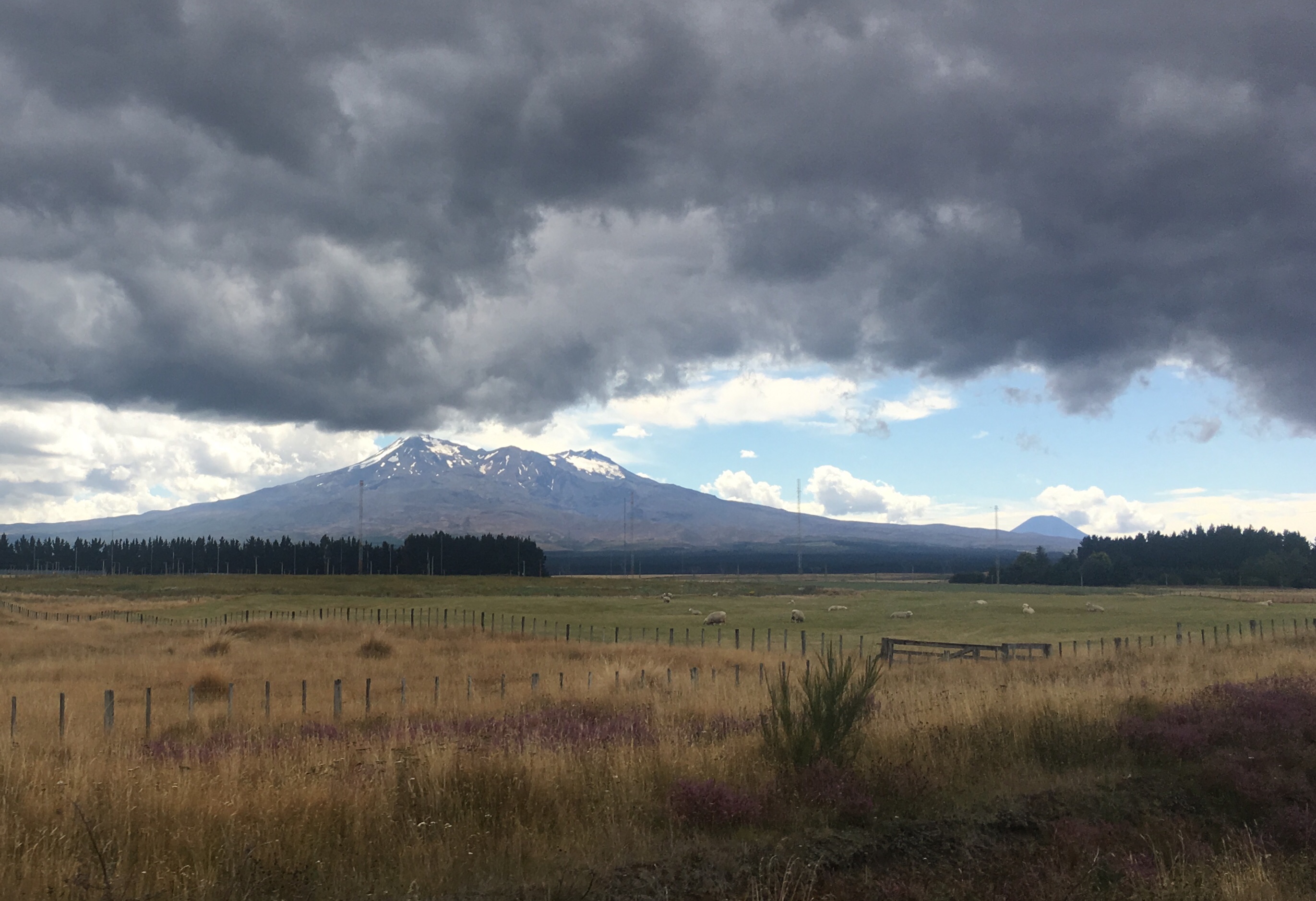
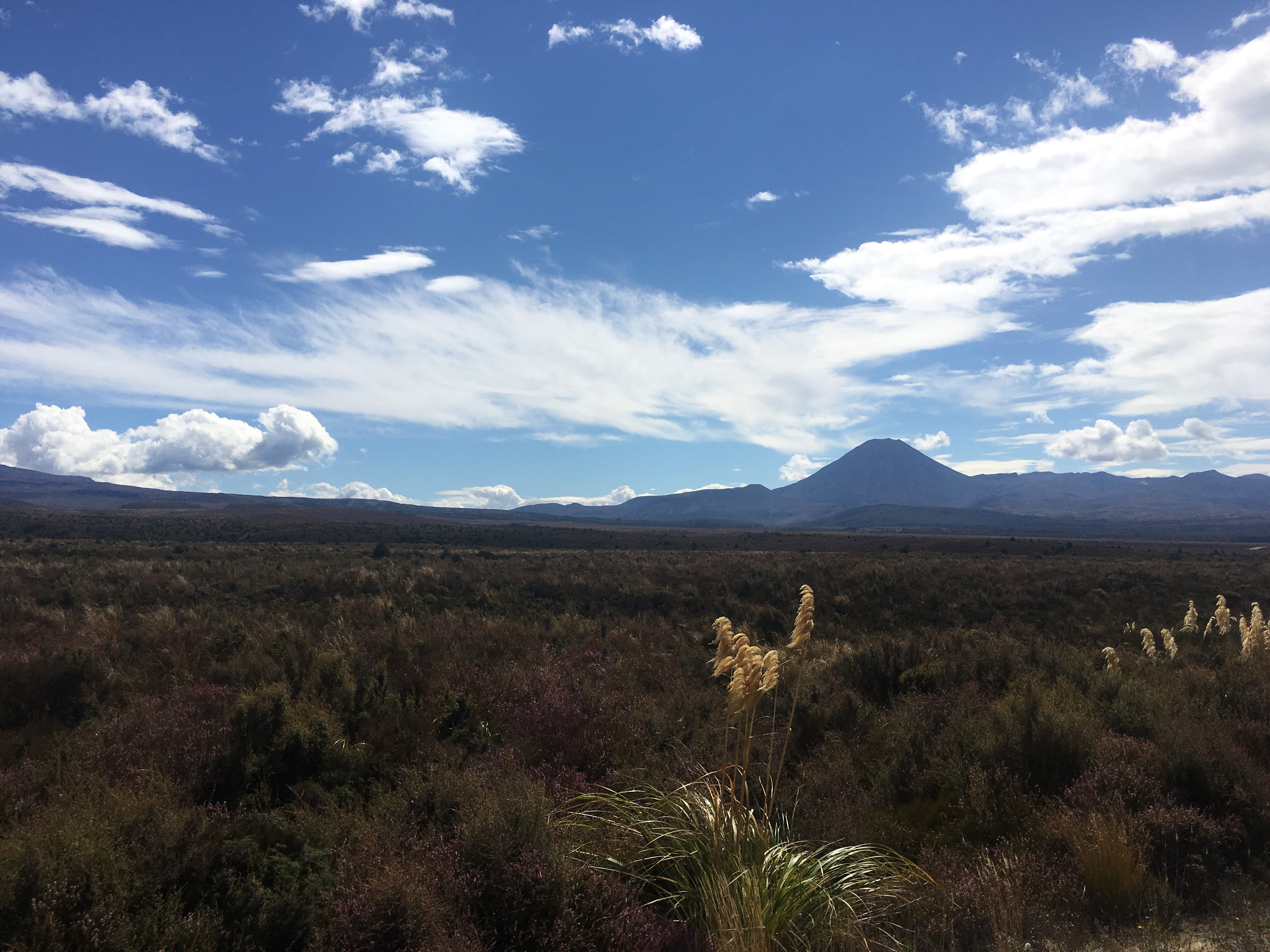 We drove alongside them for many kilometres, and then entered the Tongariro Natural Reserve and pulled into a parking zone for a better look.
We drove alongside them for many kilometres, and then entered the Tongariro Natural Reserve and pulled into a parking zone for a better look.

The landscape was fantastically unusual, it looked like pure volcanic ash. Plants were growing in clumps: grasses, hebe, even heather providing a surreal splash of purple amongst the brown of the ash.
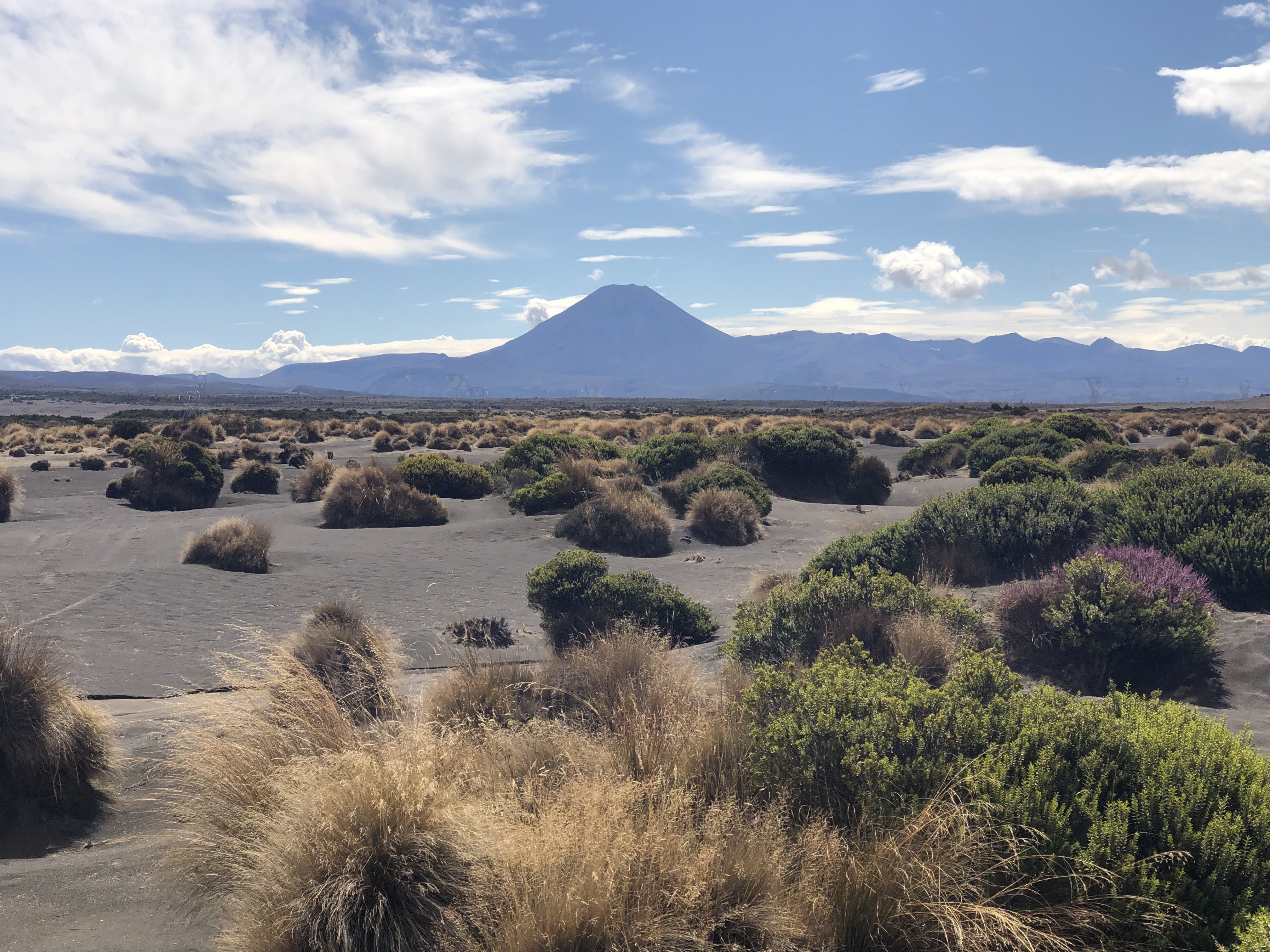
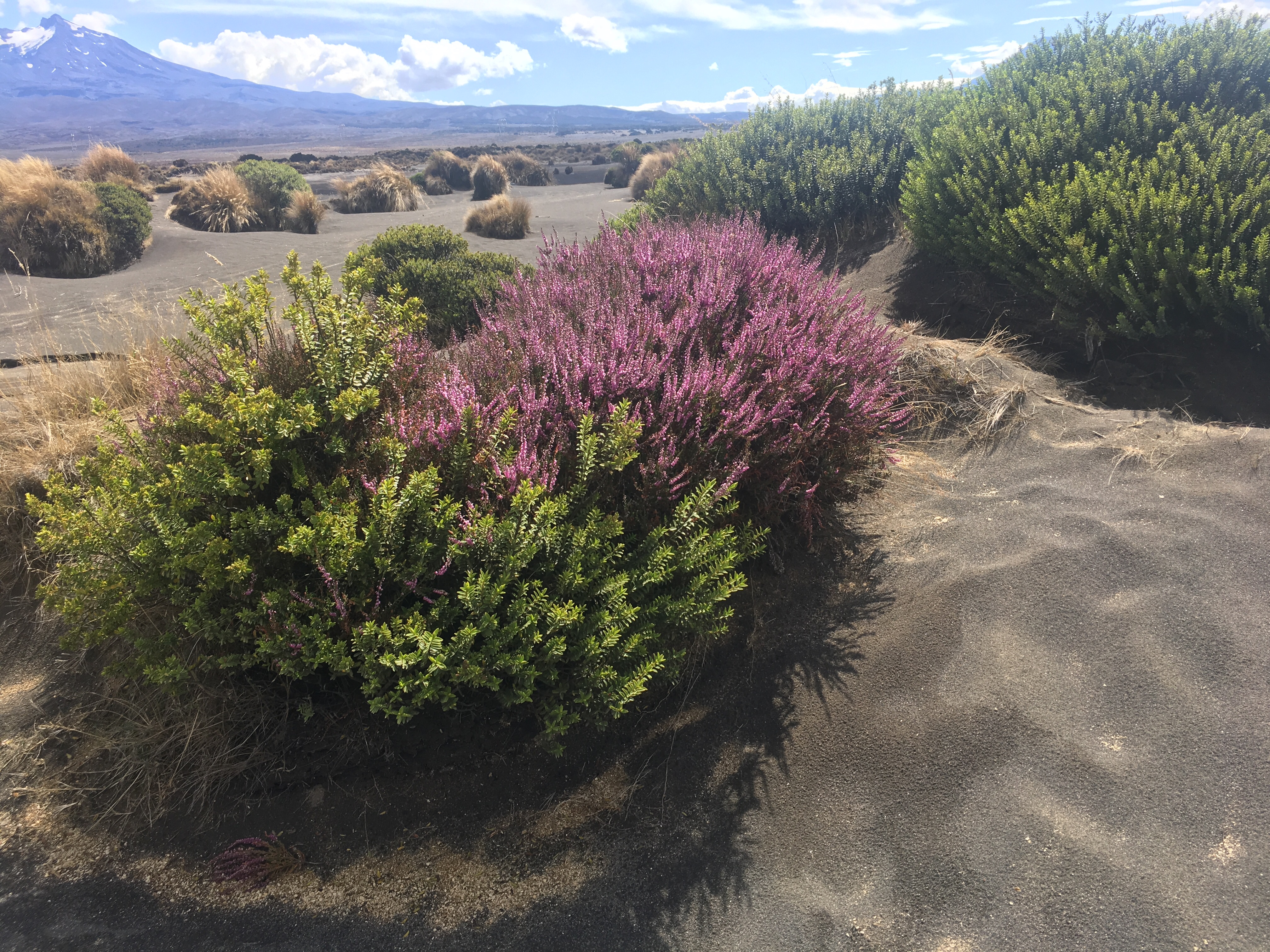
Walking around in it, it became clear that it was ash. Like walking on the moon…
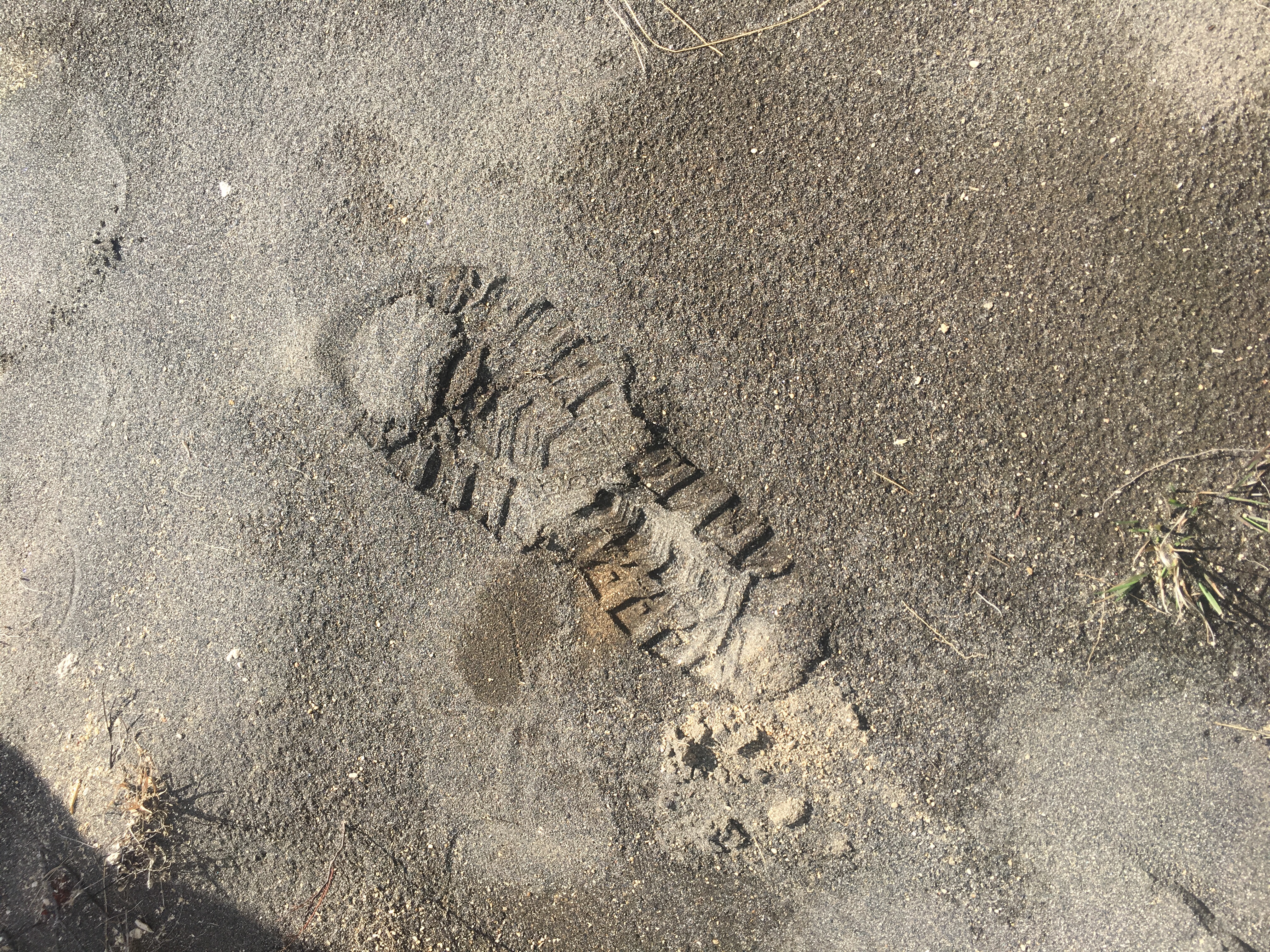
Jonathan speculated that below our feet were many metres more ash, and when we got back on the road (now known as the Desert Road), the cuts on either side showed that to be true.
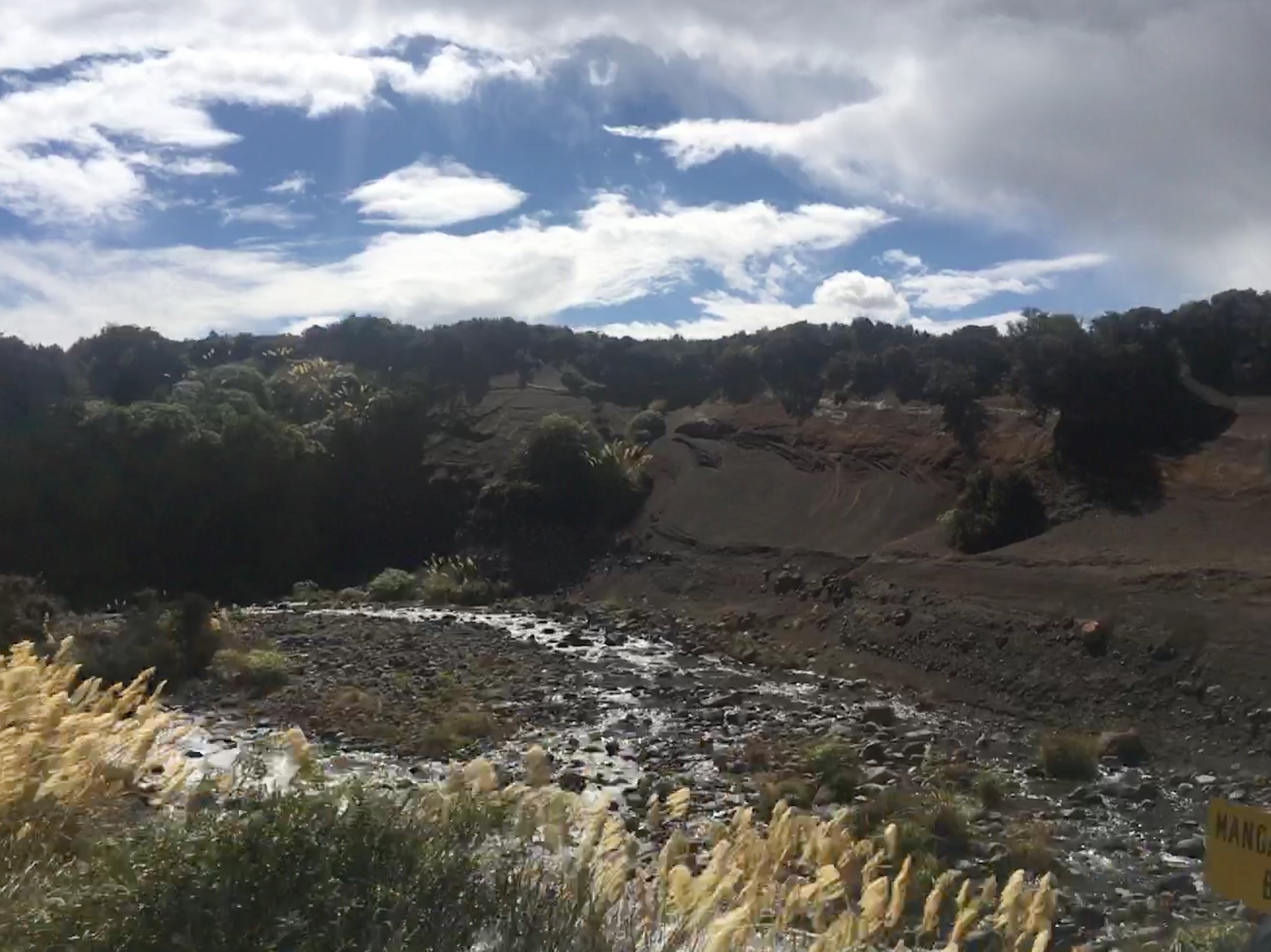
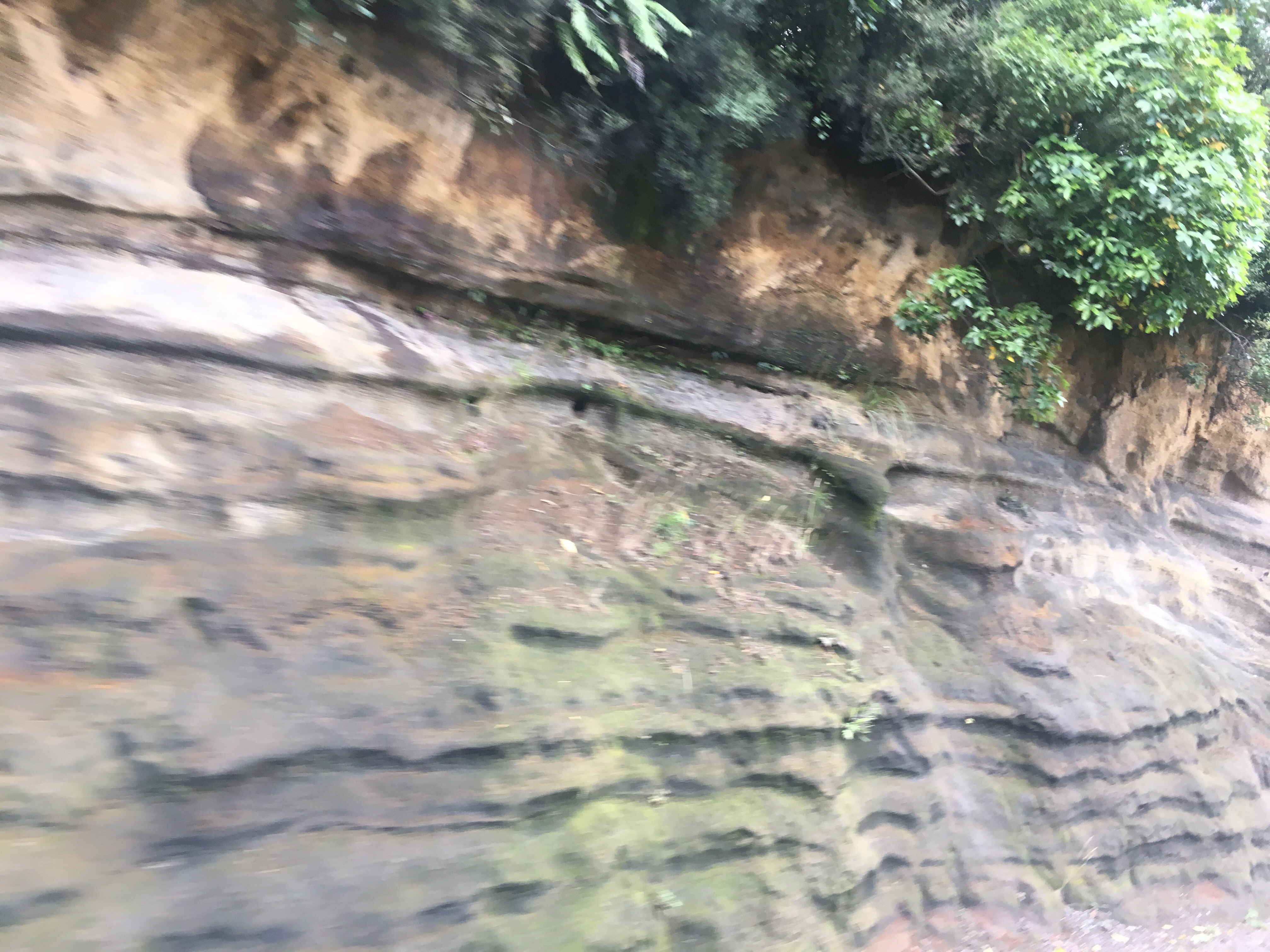
There were even volcanic bombs in the ash layers in places, lumps of lava thrown out of an erupting volcano which had cooled before they reached the ground.
Eventually we emerged from the volcanic desert and (after a quick supermarket shop) arrived at Lake Taupō. We’ll be here for a couple of nights, in a lovely site in Motutere Bay, overlooking the lake.
Motorhome day forty: Motutere Bay
Just a couple of touristy things to accomplish today (oh, and some laundry ????).
After a lazy breakfast we headed out to have a look at the Huka Falls. It was only a short drive away, right around the side of Lake Taupo to begin with, which was very scenic. We had passed this way on our journey south, and remembered the big geothermal power plant and the steam vents everywhere along the side of the road.
From the parking for the waterfall it was a peaceful fifteen minute walk down to the bridge over the Huka River, at the point where it compresses into a narrow gap and the water thunders down. We could hear it intermittently on the walk through the forest, but for most of it we heard only tui and bellbirds, and we saw a lovely fantail, hopping about between the treetops.
The first sight of the falls was one of the best.
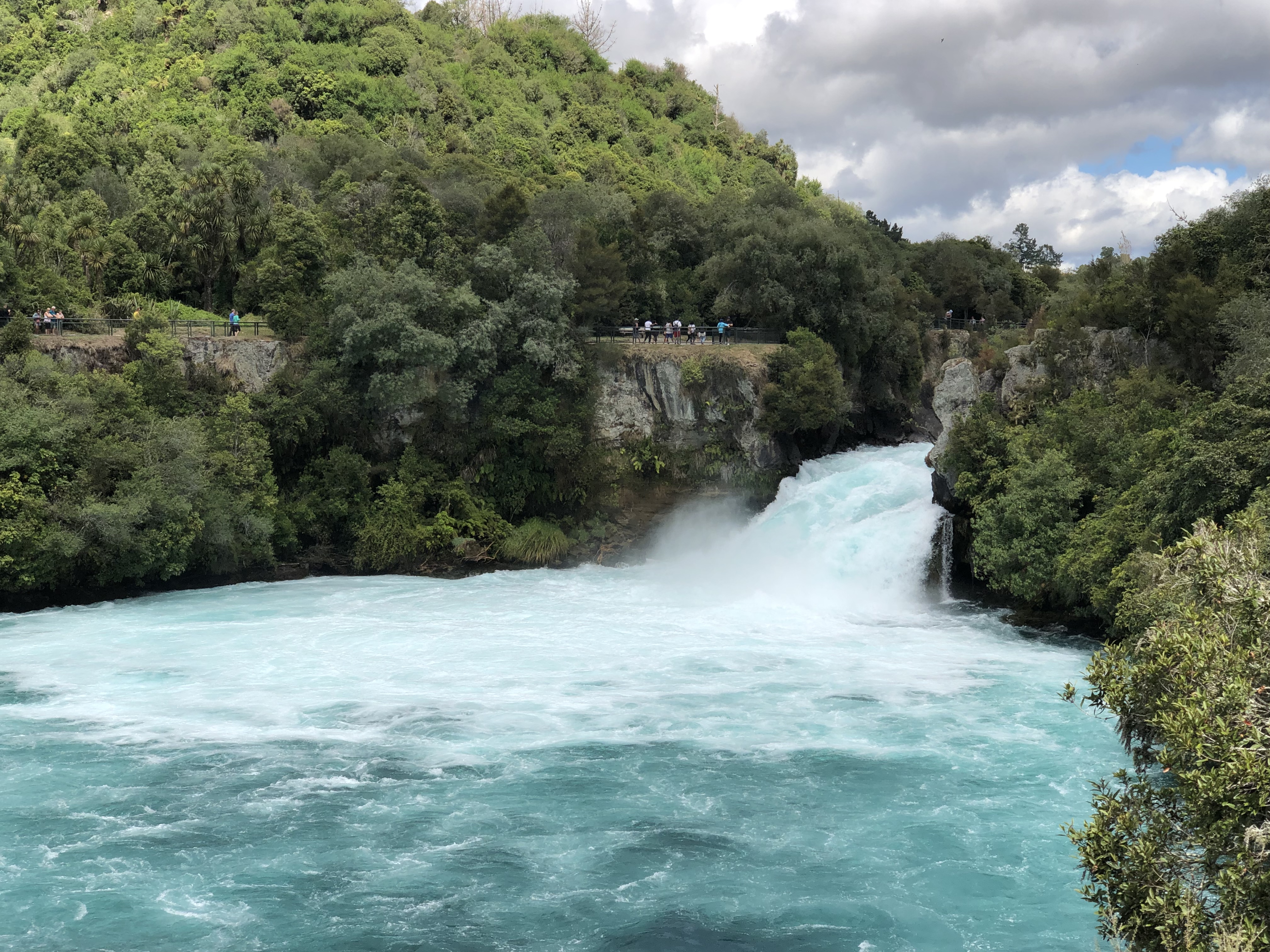
The drop is only eleven metres, but the river is dammed above, and they let the water down in a rush for touristic purposes several times a day. In fact, we later learned that one of the releases is at 2pm, and we arrived at five past! No wonder it was running so fast. There’s a jet boat which takes tourists to the bottom of the falls (and dunks them in the spray, I bet), and there was mention of kayaking, although I would imagine it to be far too dangerous to go down the falls in any kind of craft.
It was incredibly loud. We walked around the last part of the forest to the bridge just above the falls, and could see the rapids leading to the top of the waterfall.
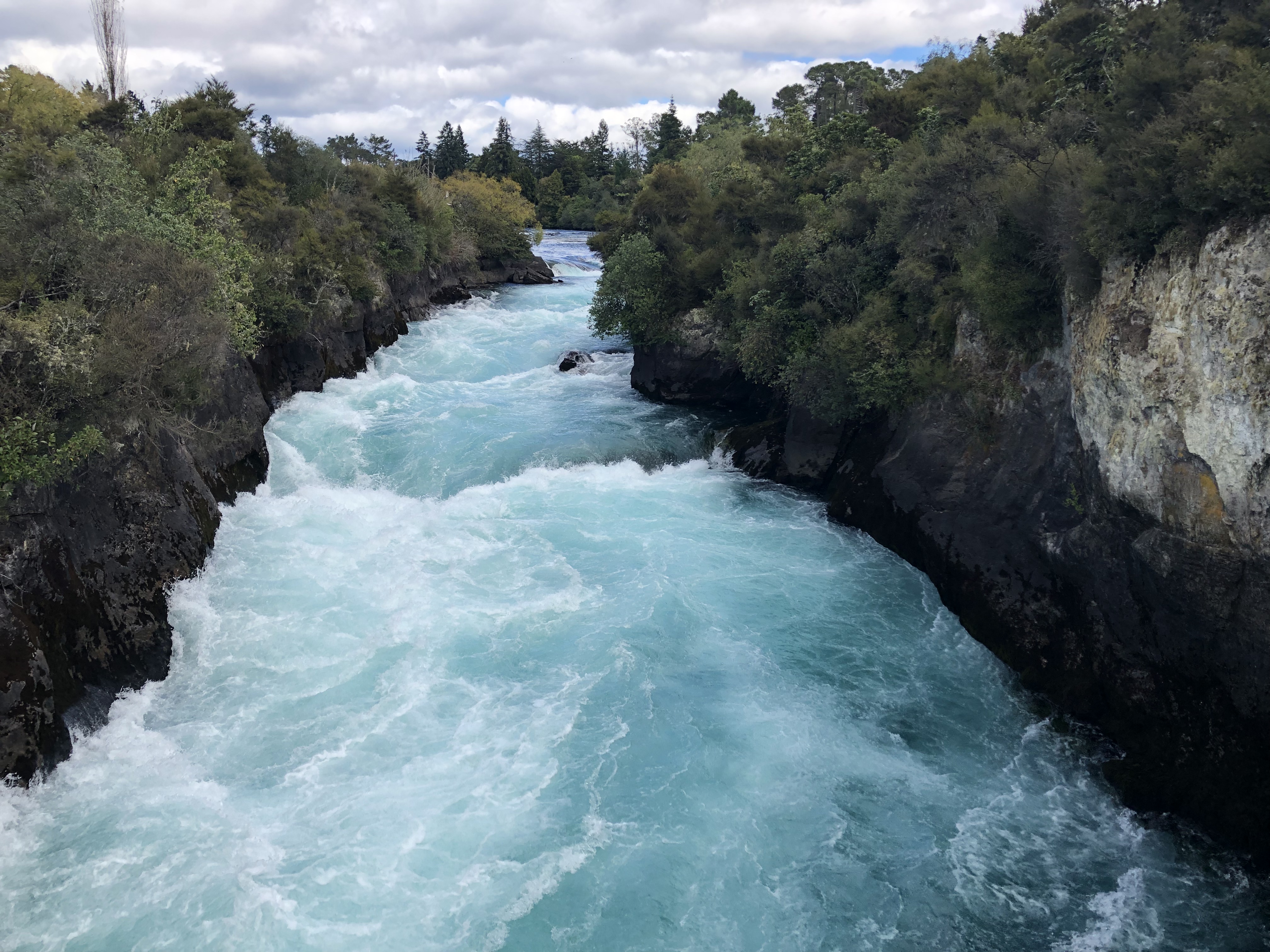
Over the other side of the bridge it was possible to get quite a close look at the water bursting over the ridge, and the maelstrom below.

The information board said that over 200,000 litres of water flow over the falls every second. The colours were different in each part of the river. At the top above the rapids, it was a serene blue. Though the rapids it became turquoise, and as the water squeezed through the rock gap and shot out into mid-air it became pure white. Below the falls the aerated water was a bowl of churning white froth, and then within fifty metres or so, back to serene blue. It must look quite spectacular from the air.
Once we’d had a good walk along, we retraced our steps to the van and drove the short distance to the Craters of the Moon. Here we were hoping to see the steam vents up close, and we weren’t disappointed. A walkway took visitors around what looked like the inside of a volcano crater, flat at the bottom, with a ridge around the outside.

There were signs everywhere warning how dangerous it was to step off the path. Given New Zealand’s usual ‘use your common sense’ attitude to health and safety, that must have meant that it was VERY DANGEROUS INDEED if they felt moved to put signs up. All along the walkway there were wisps of steam floating up from the ground. Every so often there was a viewing platform and a really big vent, which you could sometimes hear whistling with the force of the steam escaping. The ground, where you could see it under the surprisingly lush vegetation, was yellow, red, and sometimes green, where the geothermal activity had transformed the soil and rocks.
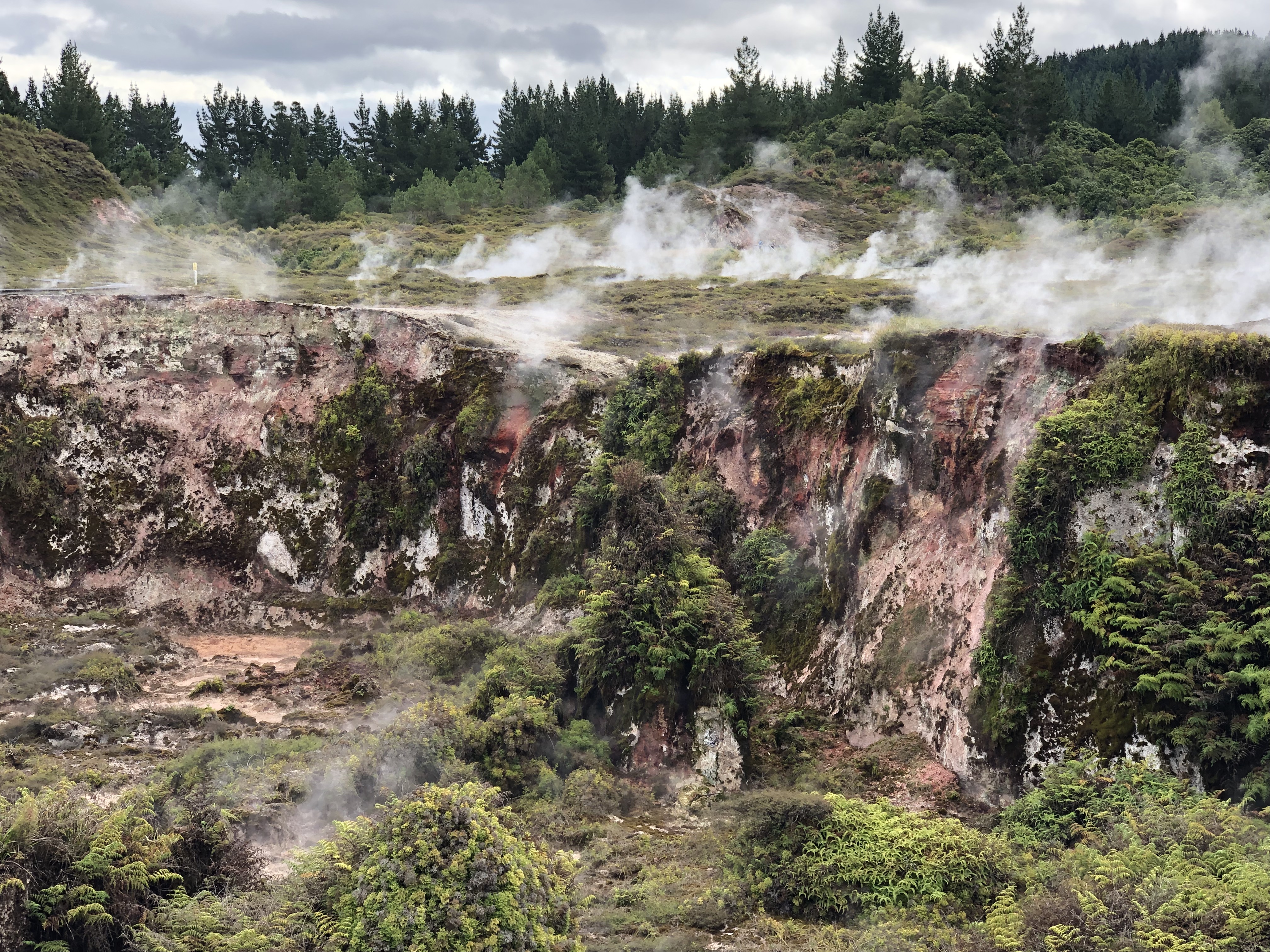
There was a very faint smell of sulphur, and a muggy, steamy feel to the whole place. The last part of the walk took us up to the crater rim for a view back down over the whole site, and it was really noticeable that the air became fresher and cooler as we climbed. It was difficult not to shiver slightly, thinking about what must be going on underground to produce all the steam. Some powerful forces under our feet.
The mud pools weren’t very, well, muddy. It’s late summer, of course, and it’s been very dry, but apparently the site has changed since the arrival of the geothermal power plant next door. Still, we have other geothermal sites to visit. In fact it’s going to be a geothermal few days!
Motorhome day forty-one: Motutere Bay to Rotarua
The sunset last night was spectacular, beautiful colours over Lake Taupō. We took turns to watch the barbecue and to go down to the lake to see it unfold.
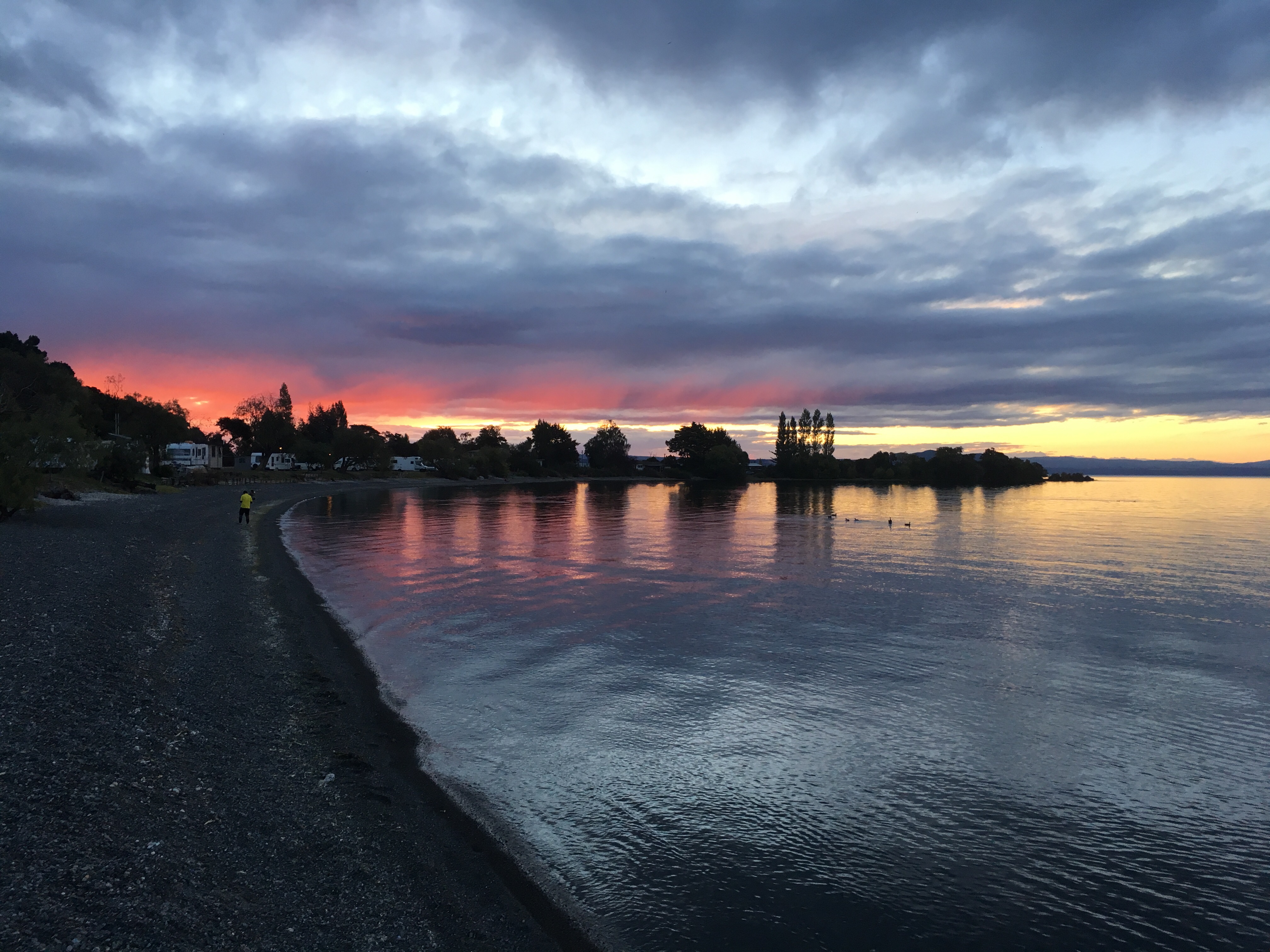
This morning we woke up surprisingly late, but were soon packed up and on the road to Rotarua. It’s not far at all from Lake Taupō, but we had a couple of visits planned on the way.
Our first stop was Orakei Korako. Another site of geothermal activity, this first involved taking a little ferry across a lake to the site itself. You could see what looked like a lava field on the other side.
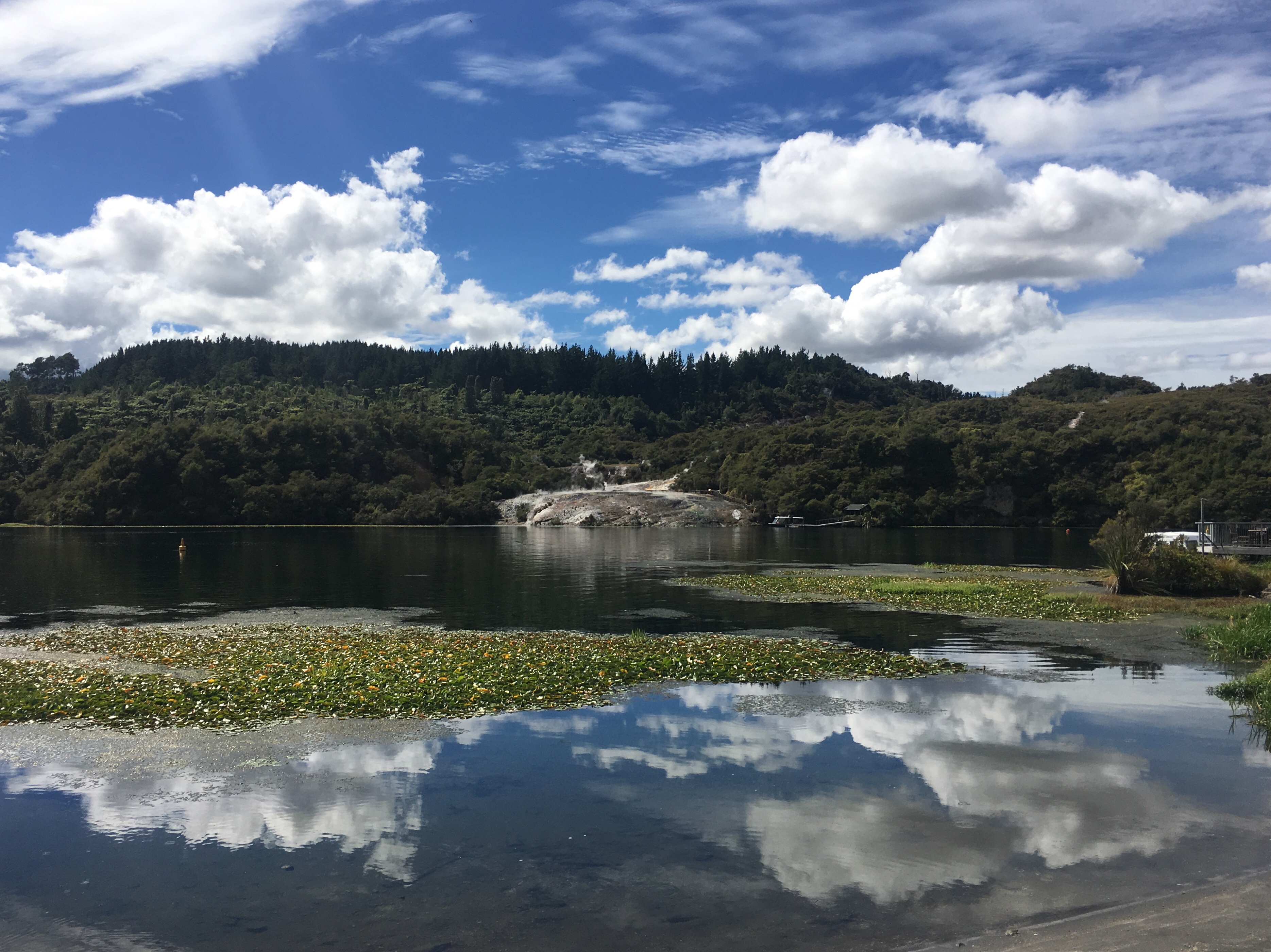
When we got there, the information boards explained that in fact it is a silica terrace, formed from minerals carried by the geothermal heated waters which burst up through geysers and hot springs.
It was an extraordinary sight, like the flowstone and features you sometimes find on the inside of a limestone cave, but on the outside. There was another boardwalk path, with even more stern warnings of the dangers of straying off it.

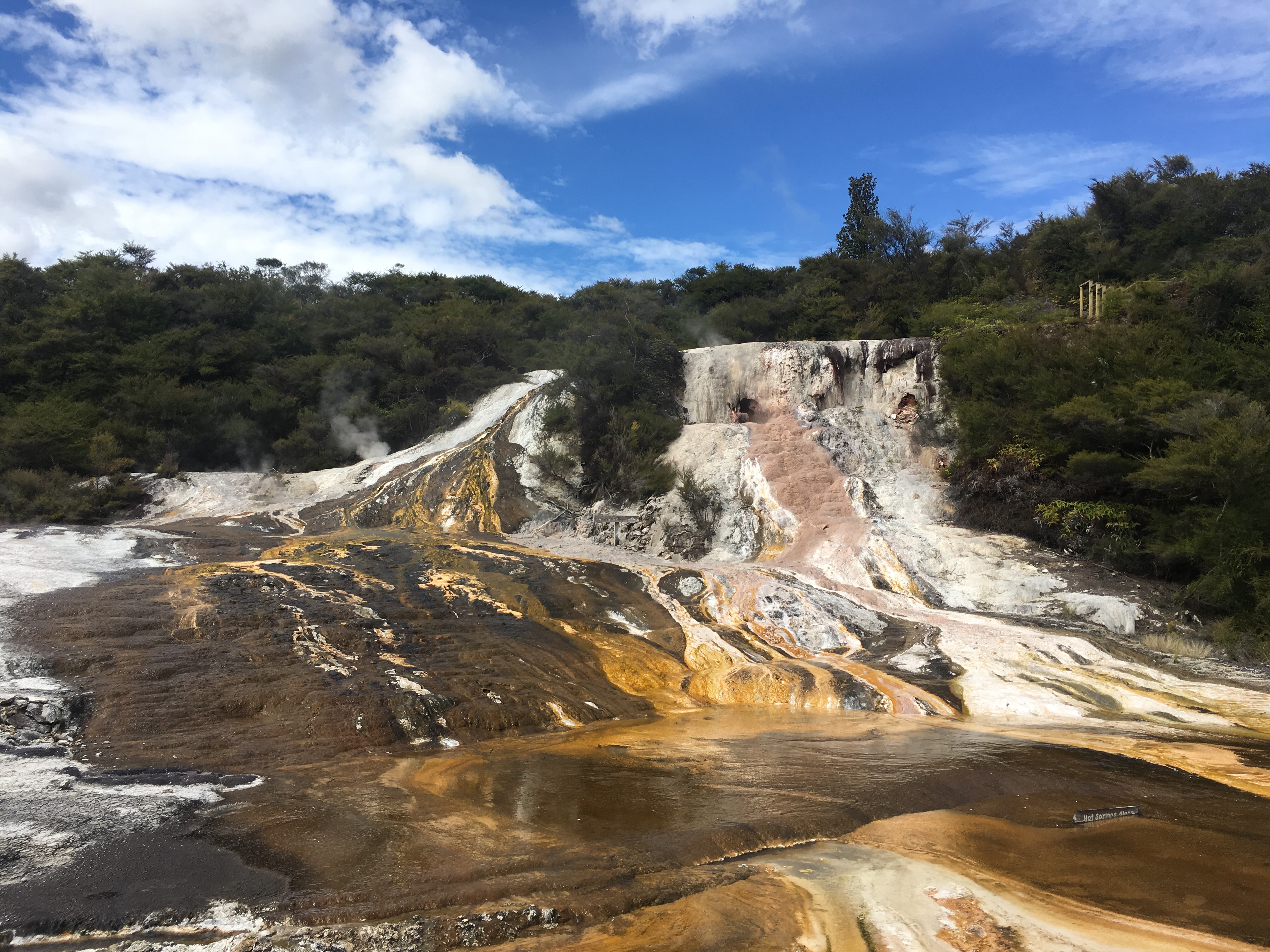 There were steaming vents everywhere, and superheated water bubbling out of the rock in places.
There were steaming vents everywhere, and superheated water bubbling out of the rock in places.
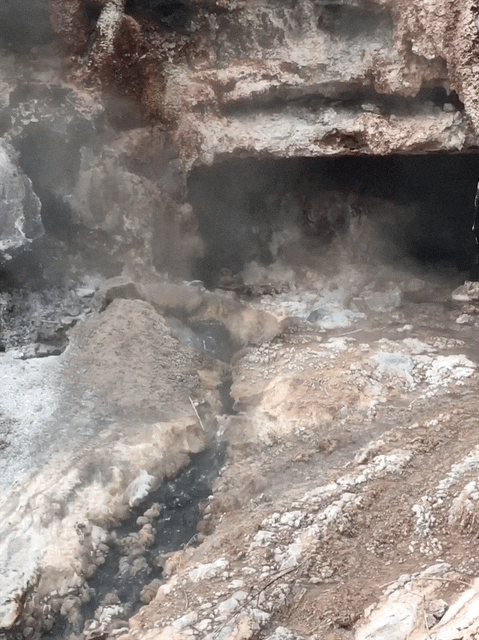
The atmosphere was hot and quite smelly! As at the Craters of the Moon, there was a surprising amount of vegetation growing quite happily in the hot steamy conditions. Some of it was labelled, and we were surprised to learn that while some of it was manuka, the taller bushes and trees were kanuka, better known to us as ‘tea tree’. Sure enough, if you crushed the kanuka leaves in your fingers, the oil they released had the familiar tea tree oil smell. Tea tree oil, like manuka, is known for its antiseptic properties, and suddenly the connection between the two plants made sense.
One of the silica terraces was a ‘scarp fault’, forced up during an earthquake.
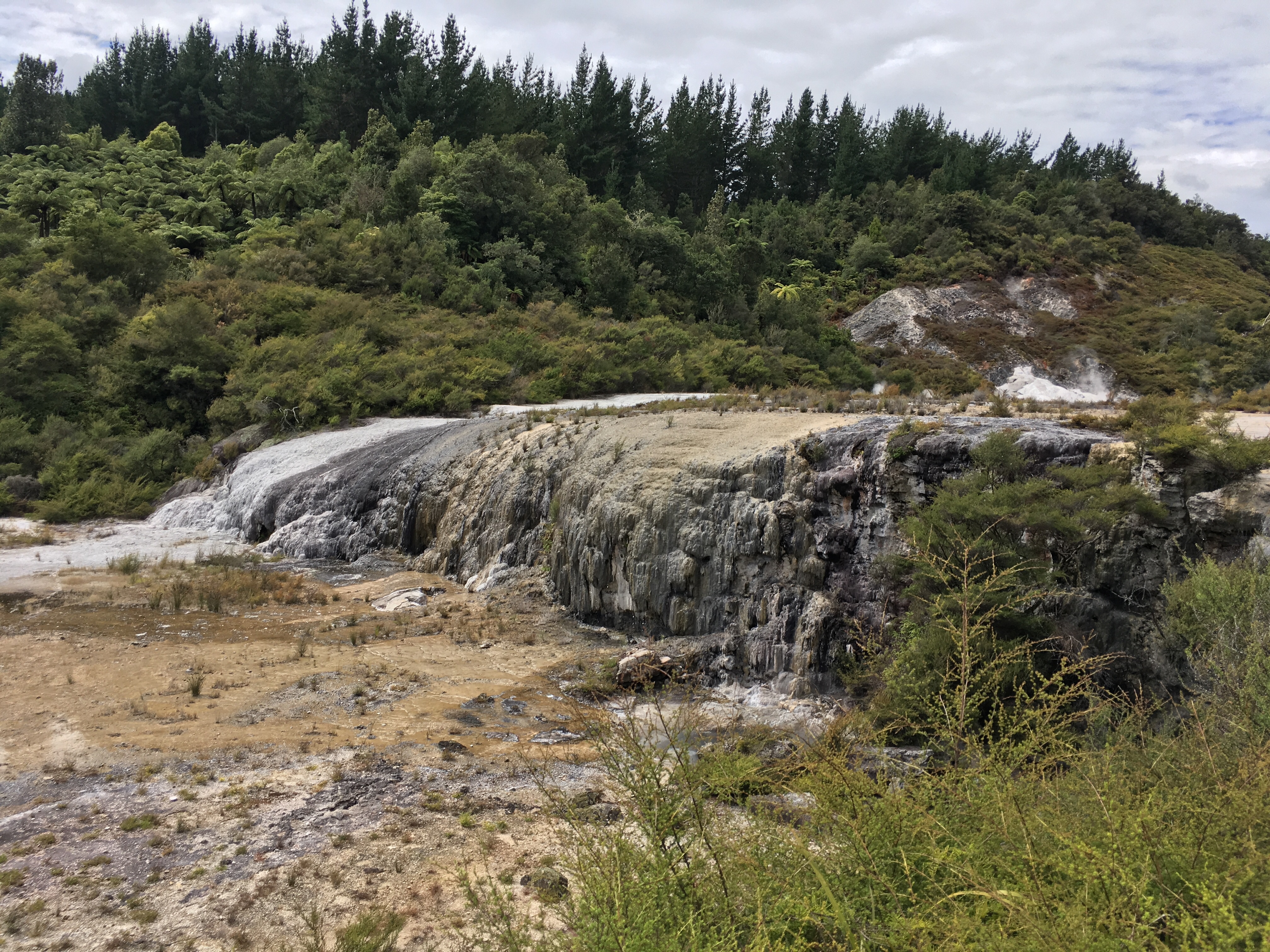
From the path above it you could look down over the ‘artist’s palette’, so called because of the array of colours in pools below.
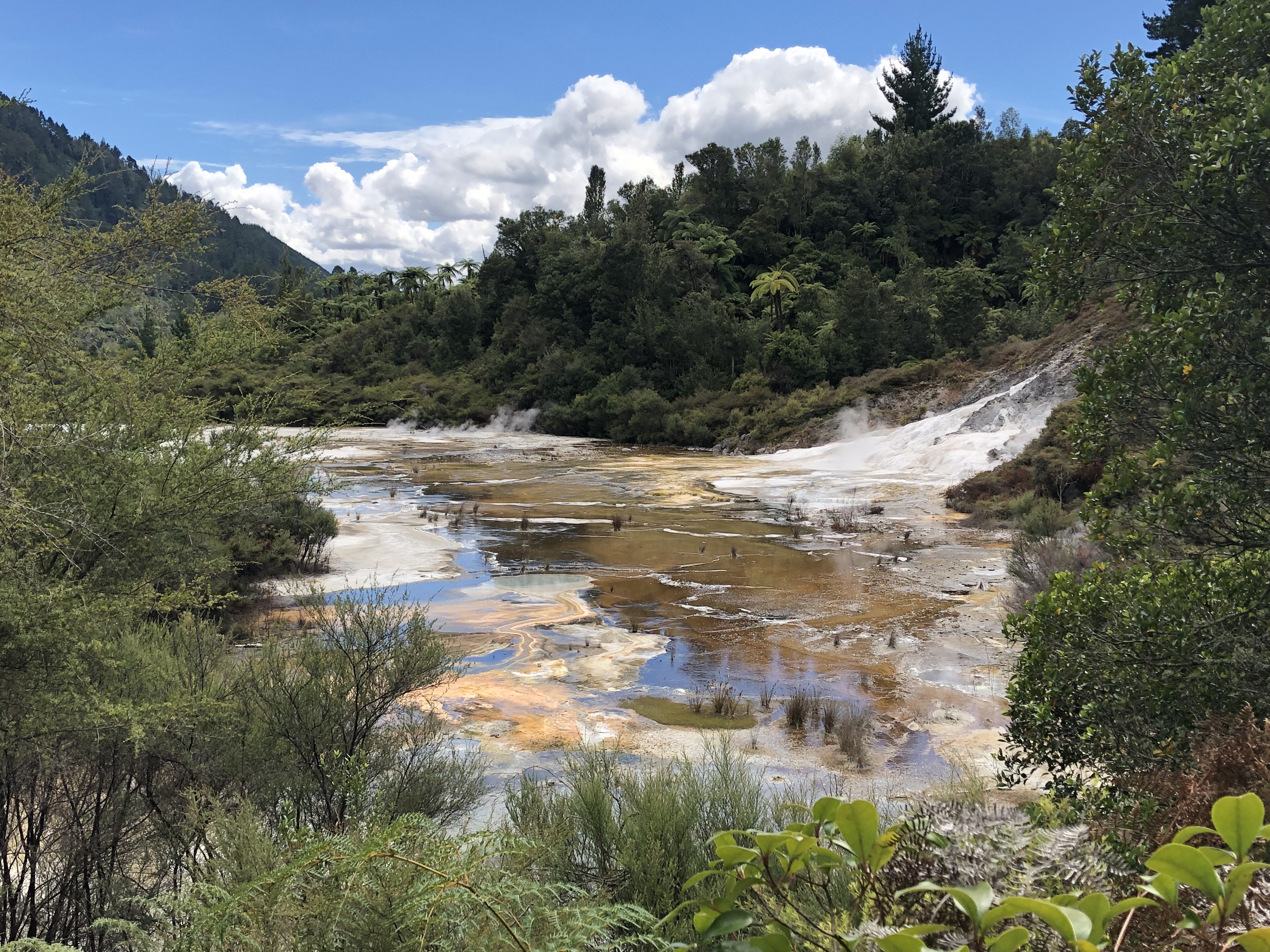
At the furthest point of the walk were the mud pools. And this time there was actual mud! It was bubbling away, and making loud glooping noises.
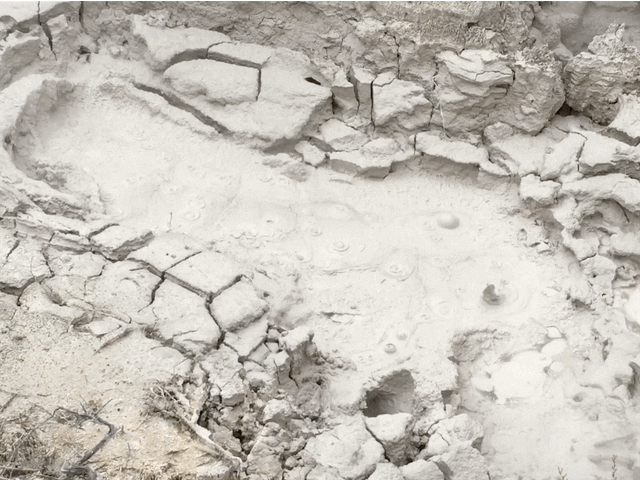
All we needed now to complete the geothermal bingo was a geyser. There were geysers at Orakei Korako, and we saw them emitting water, but they are infrequent in their spectacular water jet displays, and none of them went off while we were there.
Back at the jetty, we took the little ferry back to the van, and headed off. After a quick lunch stop we drove to the Green Lake/Blue Lake lookout. This is at the isthmus between Lake Rotokakahi (Green Lake) and Lake Tikitapu (Blue Lake), from which you can see both lakes. They are surprisingly different, the varied colours coming from their respective bottoms. Green Lake is sandy, but Blue Lake is pumice and rhyolite, so they reflect the light in different ways. Anyway, enough words – this is what they looked like:
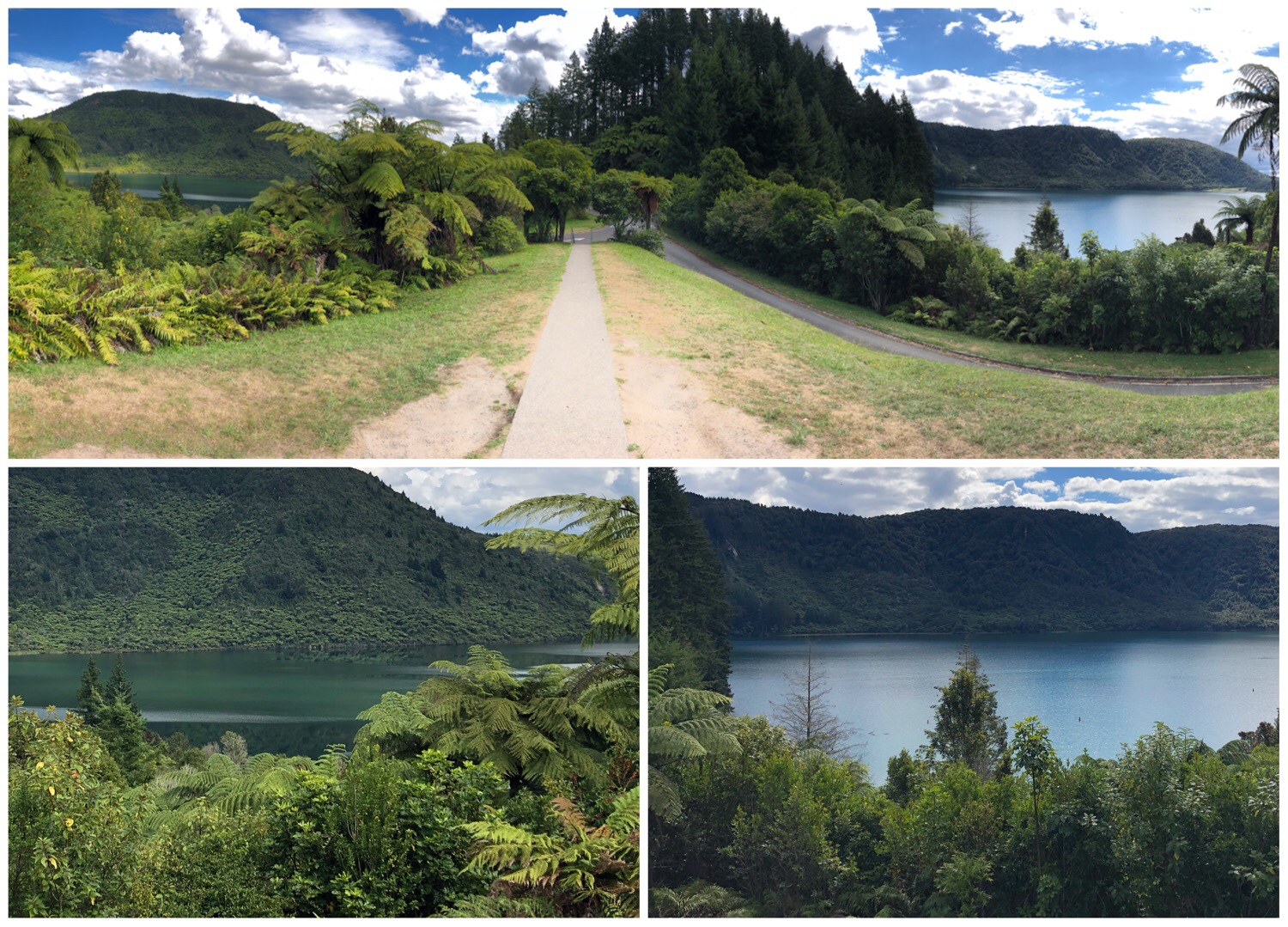
Once again, a short ‘transition’ day had turned into a full day’s sightseeing. We arrived at our campsite at Ngongotaha, on the shores of Lake Rotarua, but we were quite glad we’d chosen not to stay in Rotarua itself. It had seemed quite a busy metropolis as we drove through, but also pretty sulphurous to the nose!
The lady at the campsite has given us a ton of brochures for things to do. We might have to stay a week!
Motorhome day forty-two: Rotarua
Today continued the geothermal theme, with a visit to Te Puia, another park chock full of geothermal attractions. We headed there in the late morning, in full sunshine, possibly the hottest day we’ve had in about three weeks.
One of the main attractions at Te Puia is the Pōhutu geyser, which erupts pretty reliably once or twice an hour. As we started our walk around the site at a reconstructed Māori village, we could see it going off from a distance away. There was an excited shout from the assembled crowd and it looked pretty spectacular.
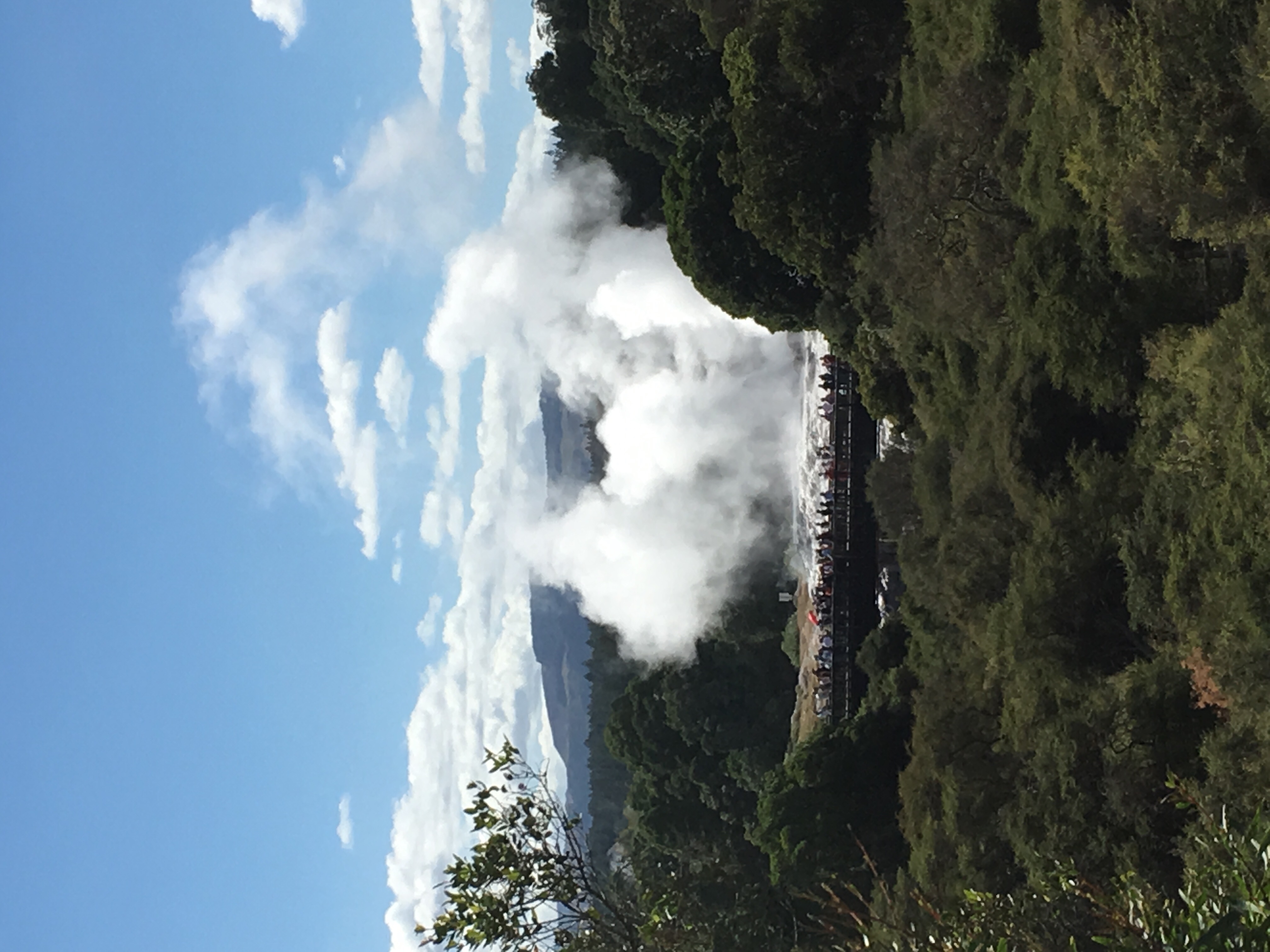
We continued our walk, and ambled in a big circle around the various features, past steam vents, bubbling mud pools, inactive geysers and cooking pools.
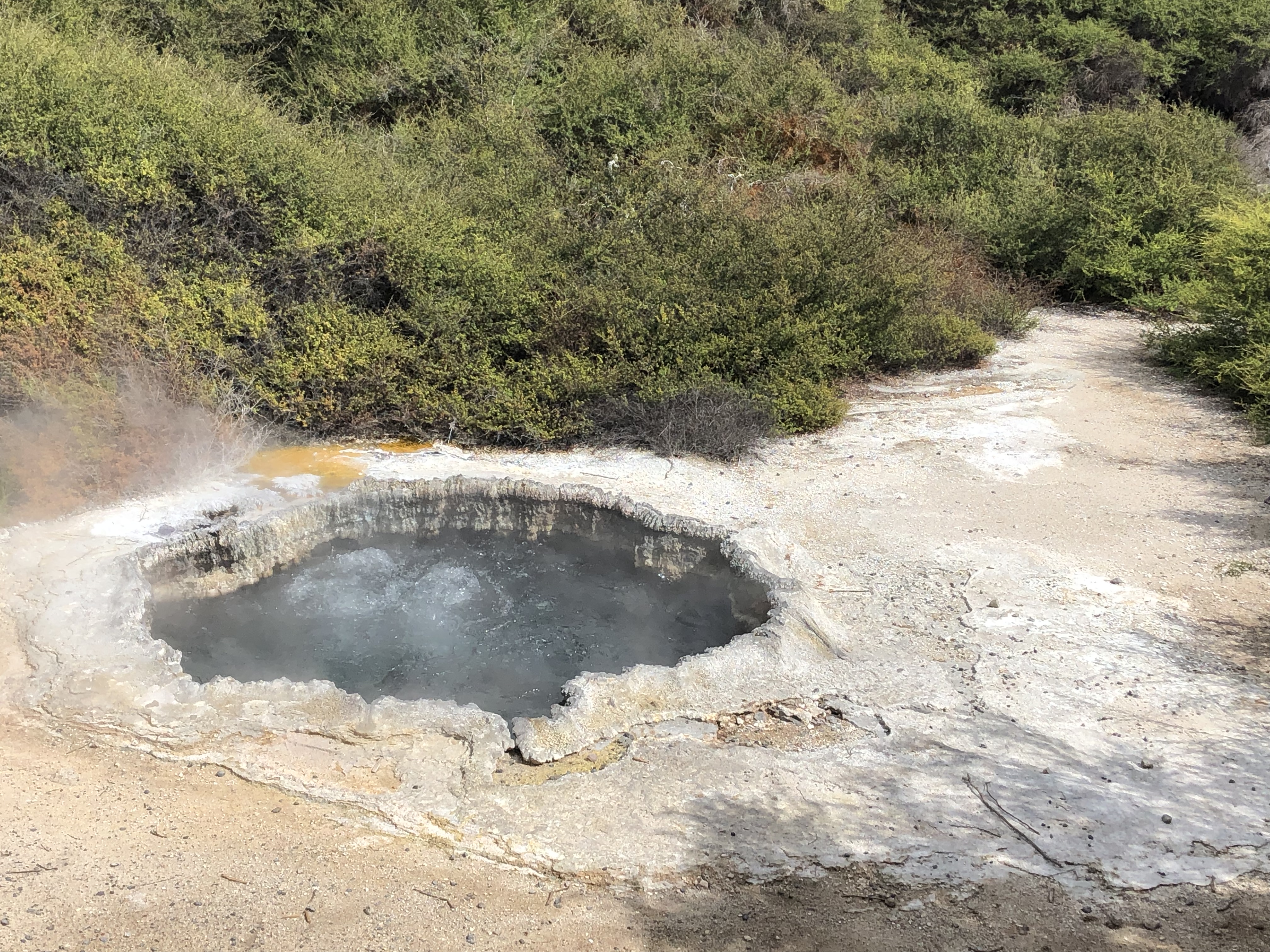
The cooking pools are geothermal heated pools of near boiling water, and were used by Māori villagers to cook their food. They would lower it into the water in woven flax bags and leave it to cook. Sausages take eight minutes, apparently! On retrieving the bags, all the water drains naturally out through the flax bag, leaving just the cooked food all ready to eat. At Te Puia you can opt for a ‘steamboat lunch’ where they cook food for you in the Māori way, although we decided not to do that.
Eventually we found ourselves at Pōhutu Geyser, and watched steam emerging from it. There were some ominous rumblings coming from below the steam vents, and soon some small jets of water started to spurt from them. There were at least three geysers in this spot, and the ‘Prince of Wales Feathers’ erupted first, in the ‘fleurs de lys’ shape which gave it its name. Slightly below, a smaller geyser was also erupting intermittently. It all looked very promising.
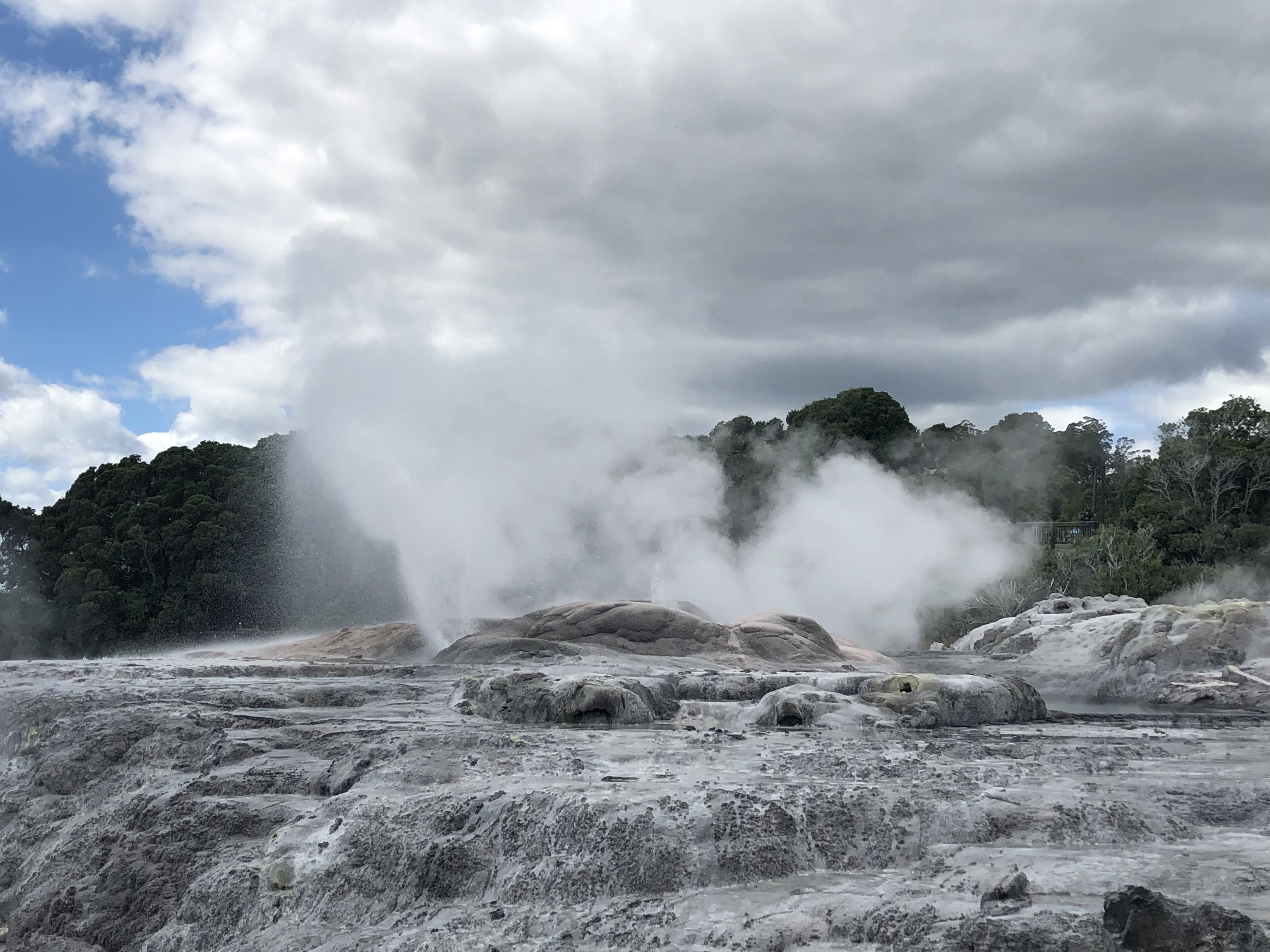
When Pōhutu went off, it was clear why it was the main event, though. With practically no preamble, a column of superheated water shot up into the air. It was becoming steam as it got to the top of the column and floating off into the air. The ominous rumbling had turned into a full roar, and it just went on and on.
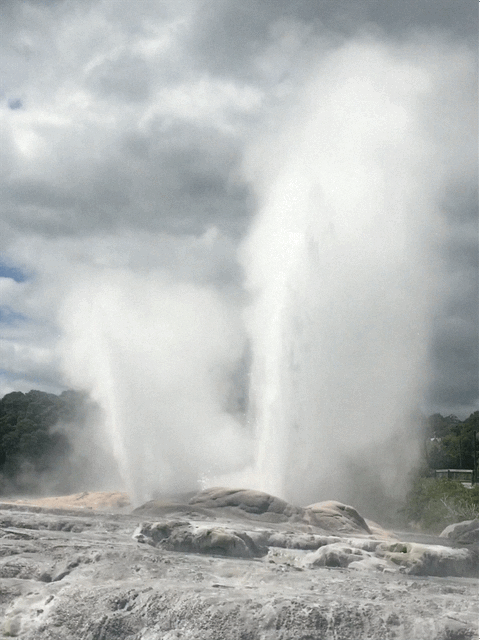
We had time to walk up to the next terrace to see it all from a different angle, and the two separate geysers were much more obviously distinct from this second position.
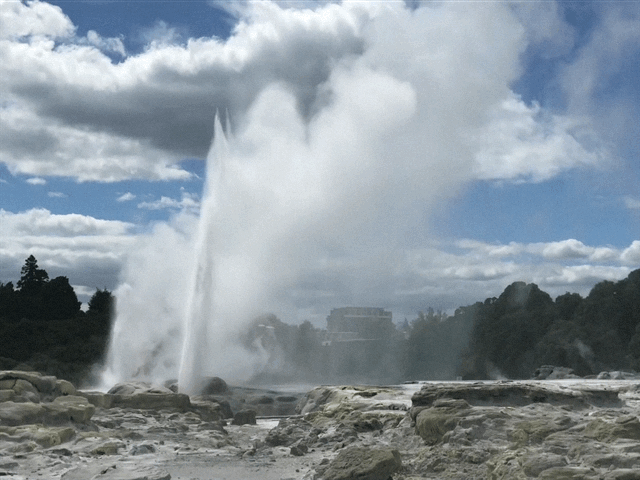
It was an incredible spectacle, and the raw power of all that boiling water being shot more than twenty metres into the air was very impressive.
It was quite pongy, of course, and you could see very bright yellow patches around some of the steam vents indicating the presence of sulphur.
After a good show of several minutes, the eruption slowed, and we set off for the exit, our geothermal bingo card now all properly ticked off.
We’d forgotten that Te Puia also boasts a small kiwi colony, but fortunately we walked right past it on the way out, so we were able to pop in and see the kiwi. It was another day/night reversal house, so once your eyes had adjusted to the dark you could see the kiwi feeding, sticking their long beaks into the soft ground looking for bugs. We watched for quite a while, absolutely transfixed by these little creatures. There is a government plan to eradicate all the non-native predators in New Zealand by 2050 – all the weasels, stoats, possums and so on. It would lovely to think that once that is complete, if it can be achieved, kiwi might be able to thrive in the wild again.
After Te Puia, we dropped in to the Government Gardens to see the museum building.
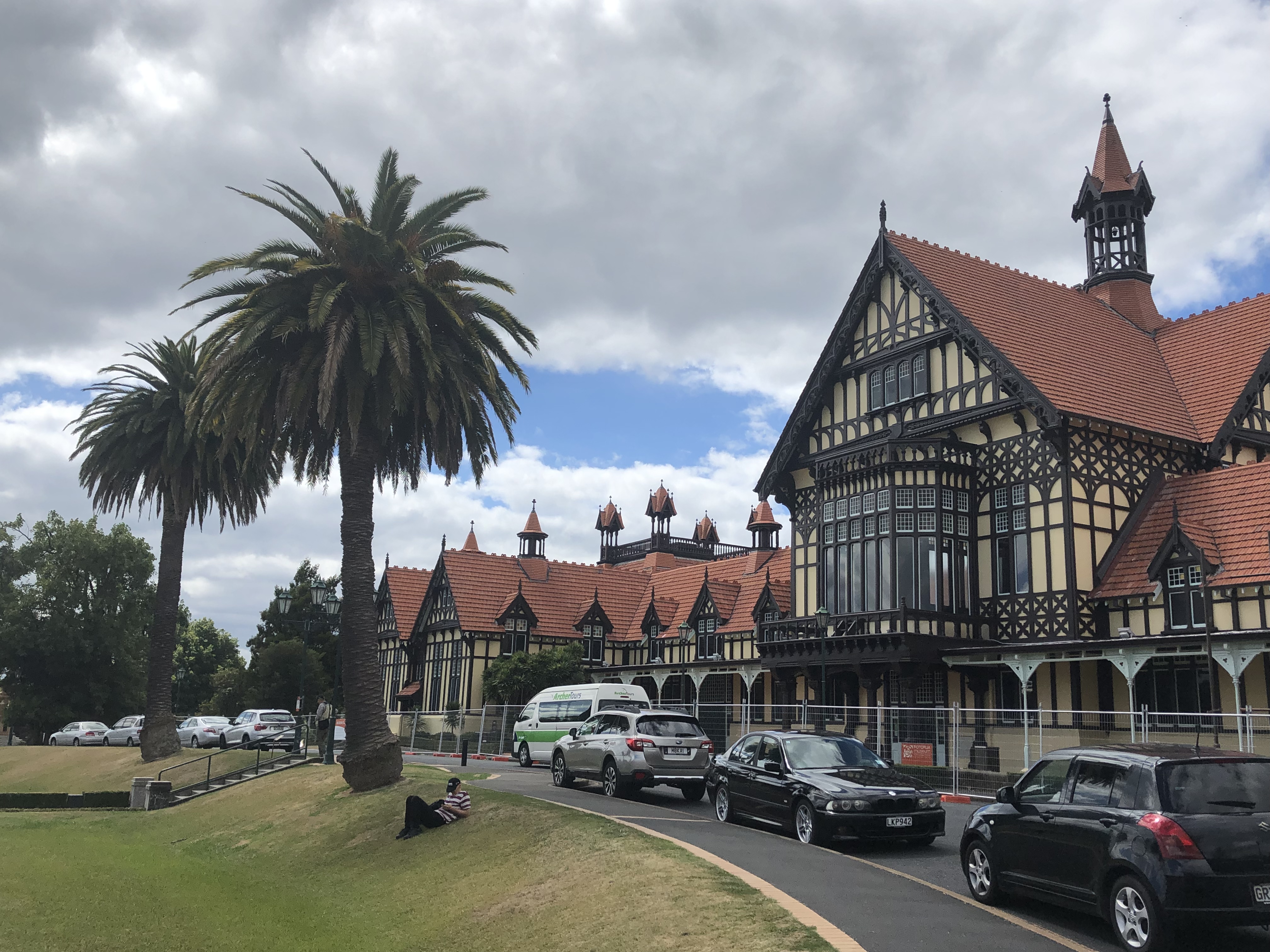 The museum is currently closed, whilst they determine how to bring it up to modern construction standards for buildings in an earthquake zone. In the Christchurch earthquake in 2016 many of the victims were killed by collapsing buildings which, it is said, had been known beforehand to be below earthquake-proof standards. As a result there have been a number of building closures across the country in order to prevent the same thing happening again. It was a lovely building, very striking, and it’s good that they are attempting to preserve it at the same time as safeguarding its visitors from the unpredictable.
The museum is currently closed, whilst they determine how to bring it up to modern construction standards for buildings in an earthquake zone. In the Christchurch earthquake in 2016 many of the victims were killed by collapsing buildings which, it is said, had been known beforehand to be below earthquake-proof standards. As a result there have been a number of building closures across the country in order to prevent the same thing happening again. It was a lovely building, very striking, and it’s good that they are attempting to preserve it at the same time as safeguarding its visitors from the unpredictable.
After lunch we had a walk round the side of the lake, including to sulphur point, which was pretty pungent! A quick look at the baths, and a visit to Whakarewarewa Māori village, and our sightseeing for the day was done.
Motorhome day forty-three: Rotarua
A more relaxed day was in prospect today, with rain forecast, and our only plan to ride up the gondola to see Lake Rotarua from above. It wasn’t raining, although the skies were a bit gloomy, but still worth a look, we thought.
The view of the lake was a little obscured by the suburbs of Rotarua, really – all the supermarkets, automotive services, and other semi-industrial stuff is outside Rotarua’s centre, but it was all sitting between us and the lake.
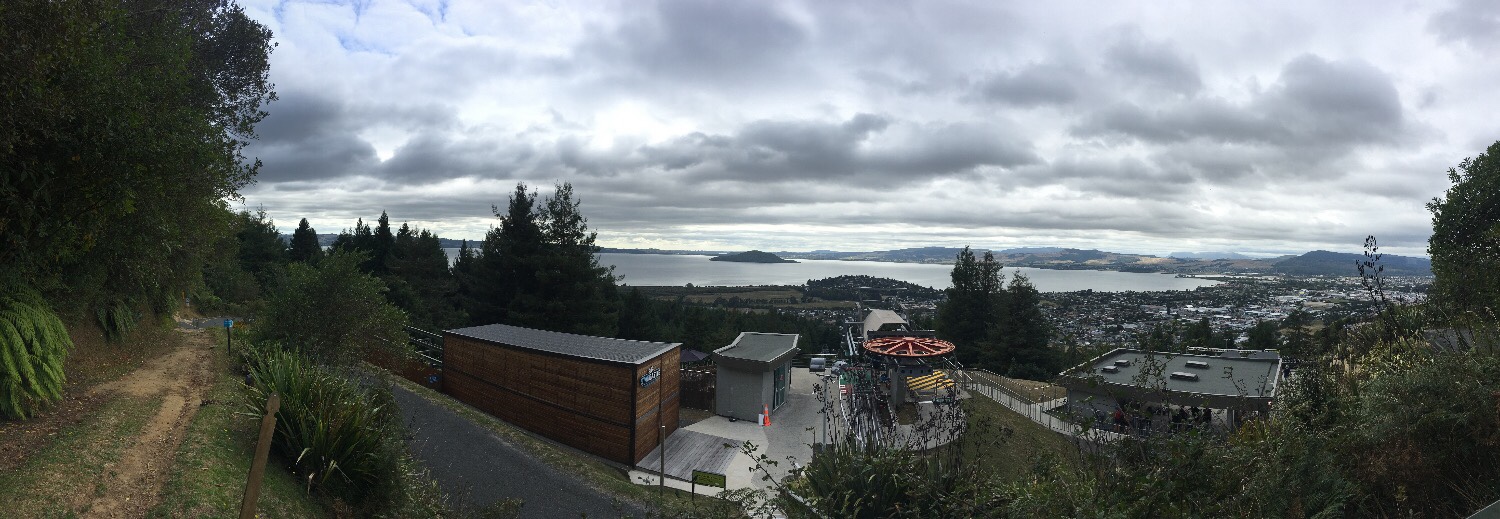
This gondola was a twin of the one in Queenstown, and had the same luge/chairlift arrangement. There was also a terrifying SkySwing thing, which we were happy to just watch, as usual:
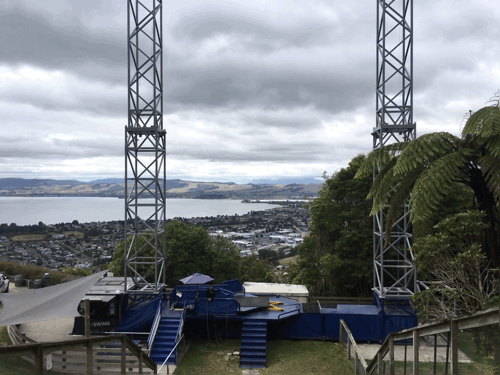
We followed the nature walk, much more our sort of thing, and spotted many silver ferns – Jonathan has a really good eye for these now. There is quite a contrast between the silvery underside and the upper green side:
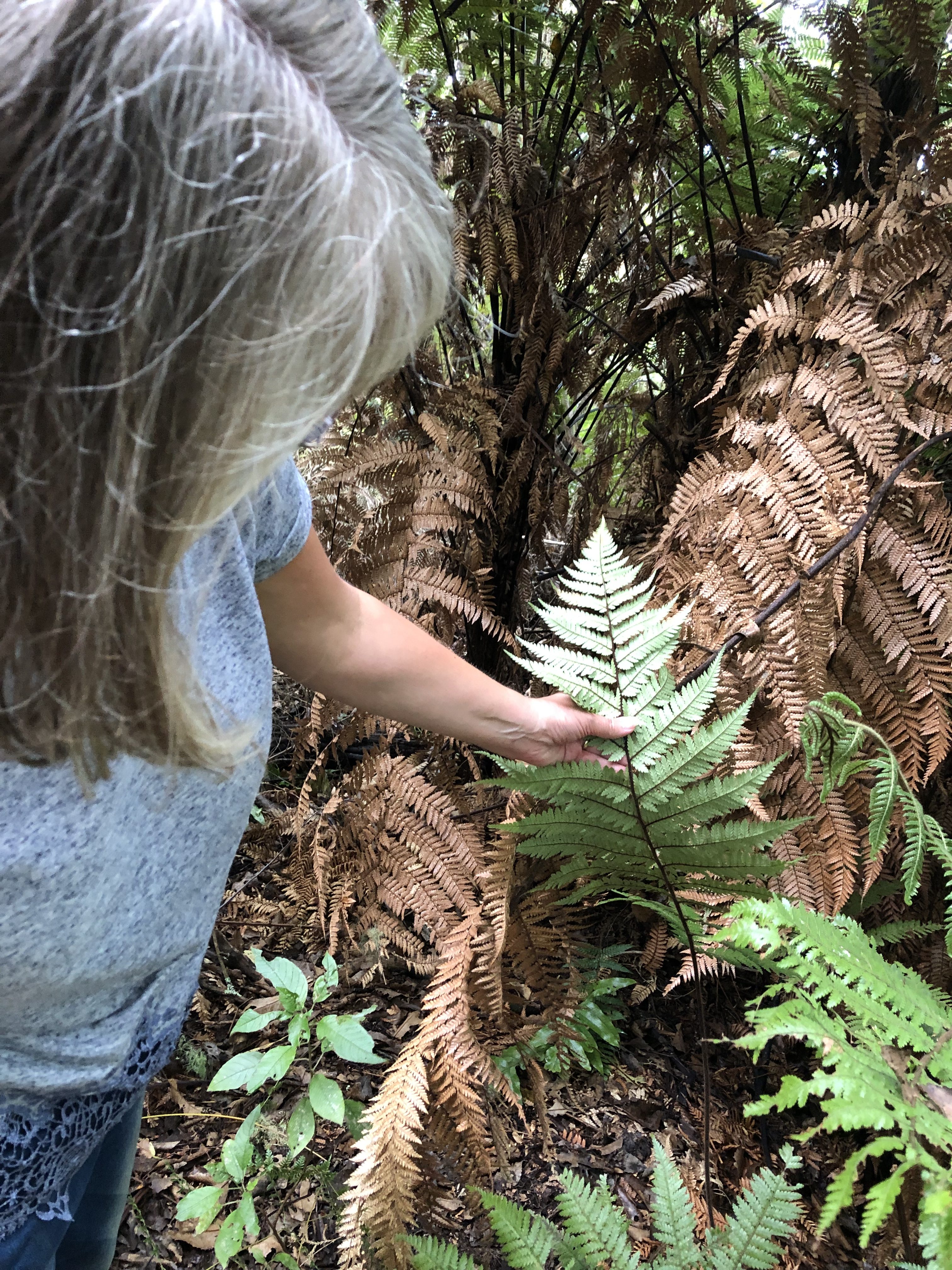
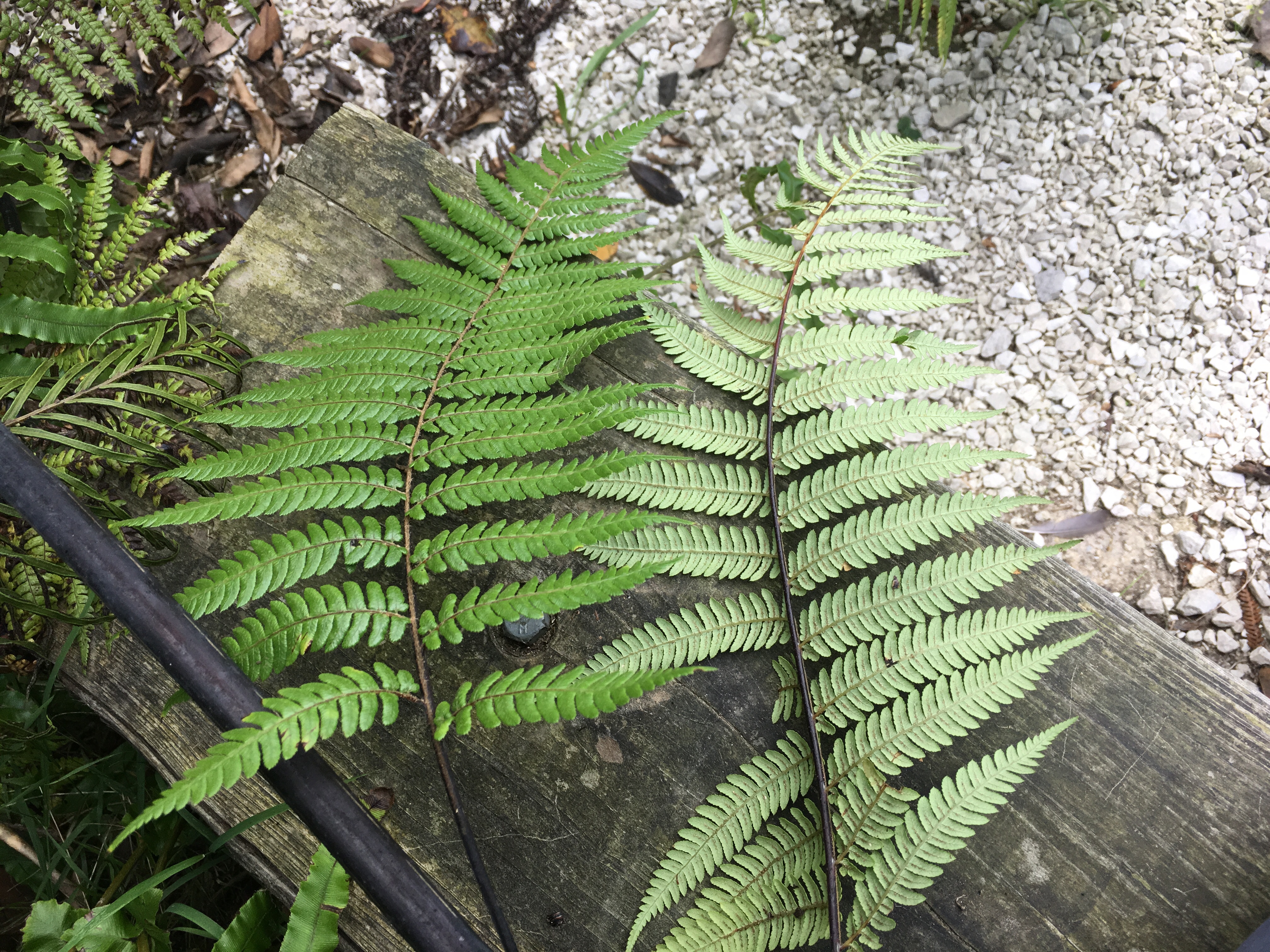
Birds were singing in the trees, it all seemed very peaceful, despite the slight traffic noise from down below and the occasional terrified yell from the SkySwing.
We took the gondola back down, and drove back to the campsite for lunch, pausing briefly for a look at the lake from shore level. There were seagulls and ducks aplenty, segregated for some reason. All the seagulls on the jetty were facing exactly the same way. Weird.
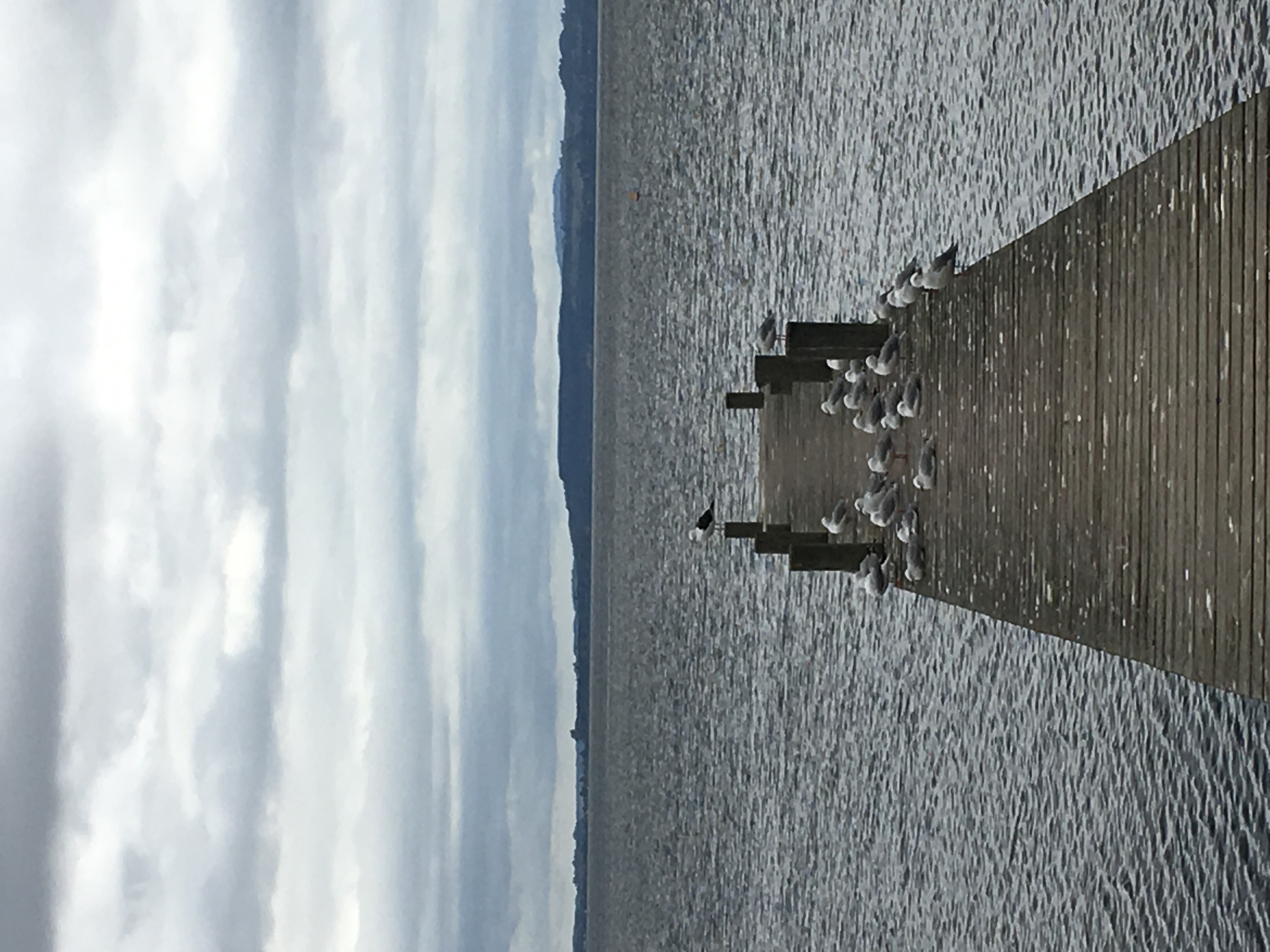
Tomorrow we’ll be driving to our last campsite of the trip, at Waitomo, via a few points of interest on the way.
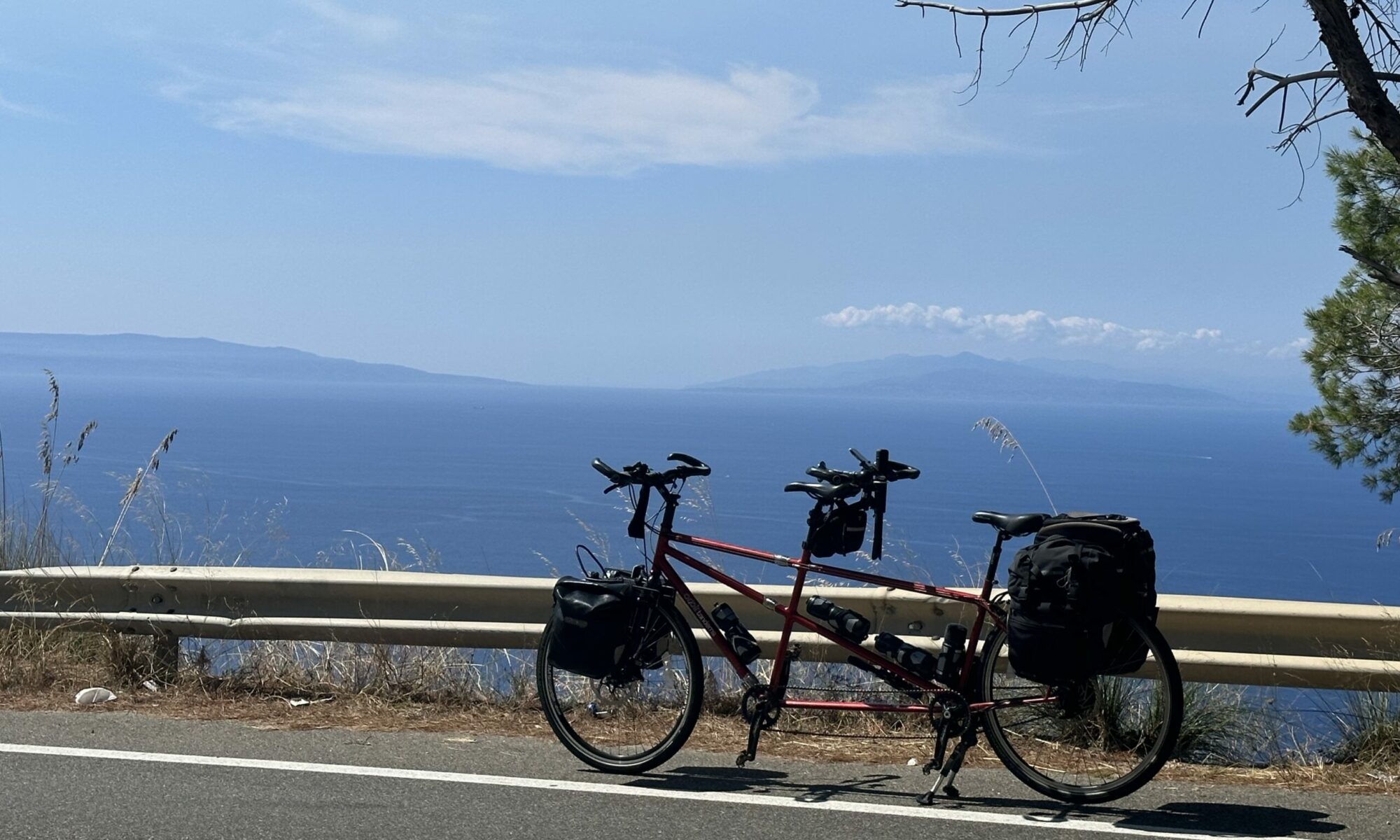
Great photos/videos! Dennis would like the SkySwing yes?
Judging by the blood-curdling screams we heard, Dennis would definitely approve!